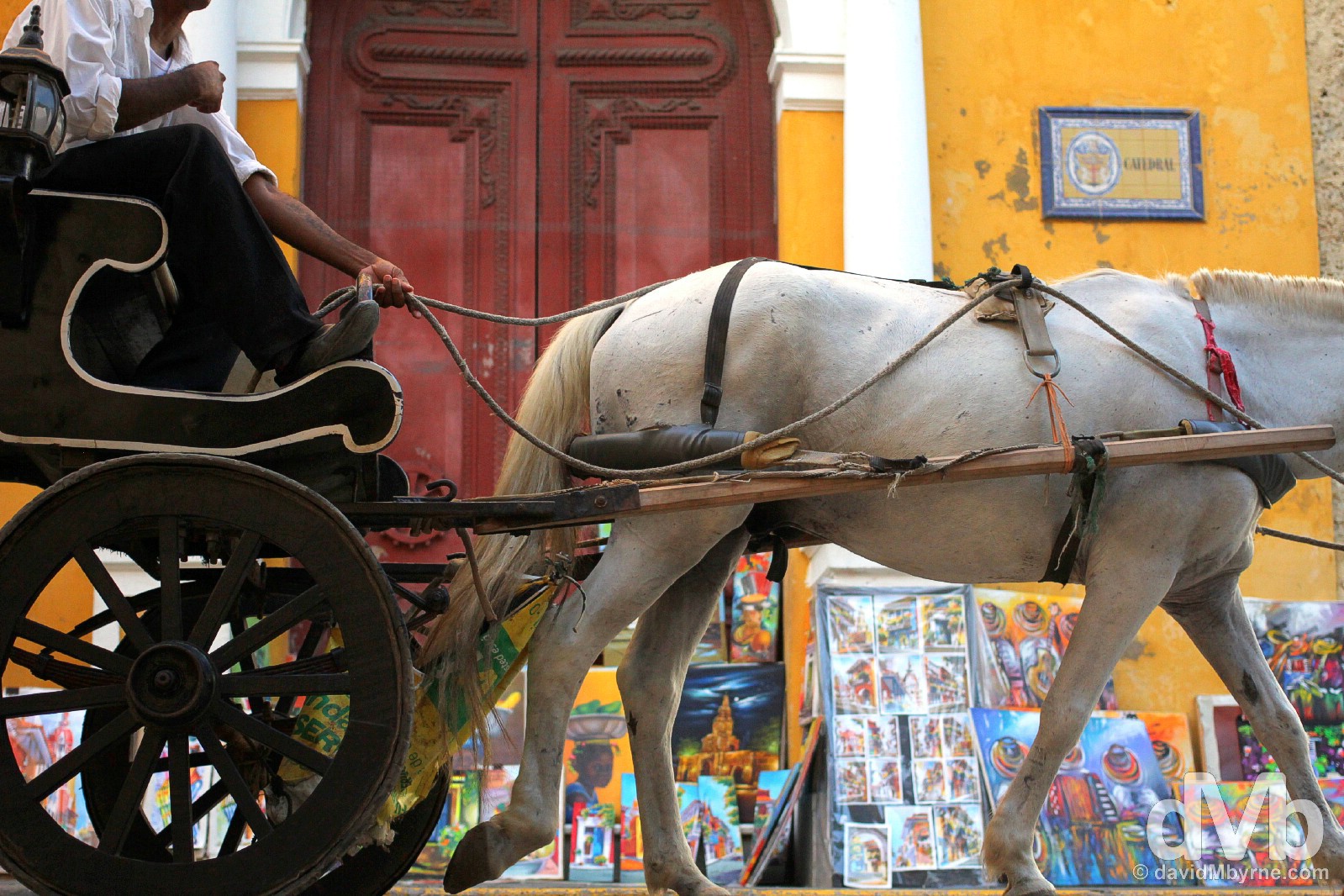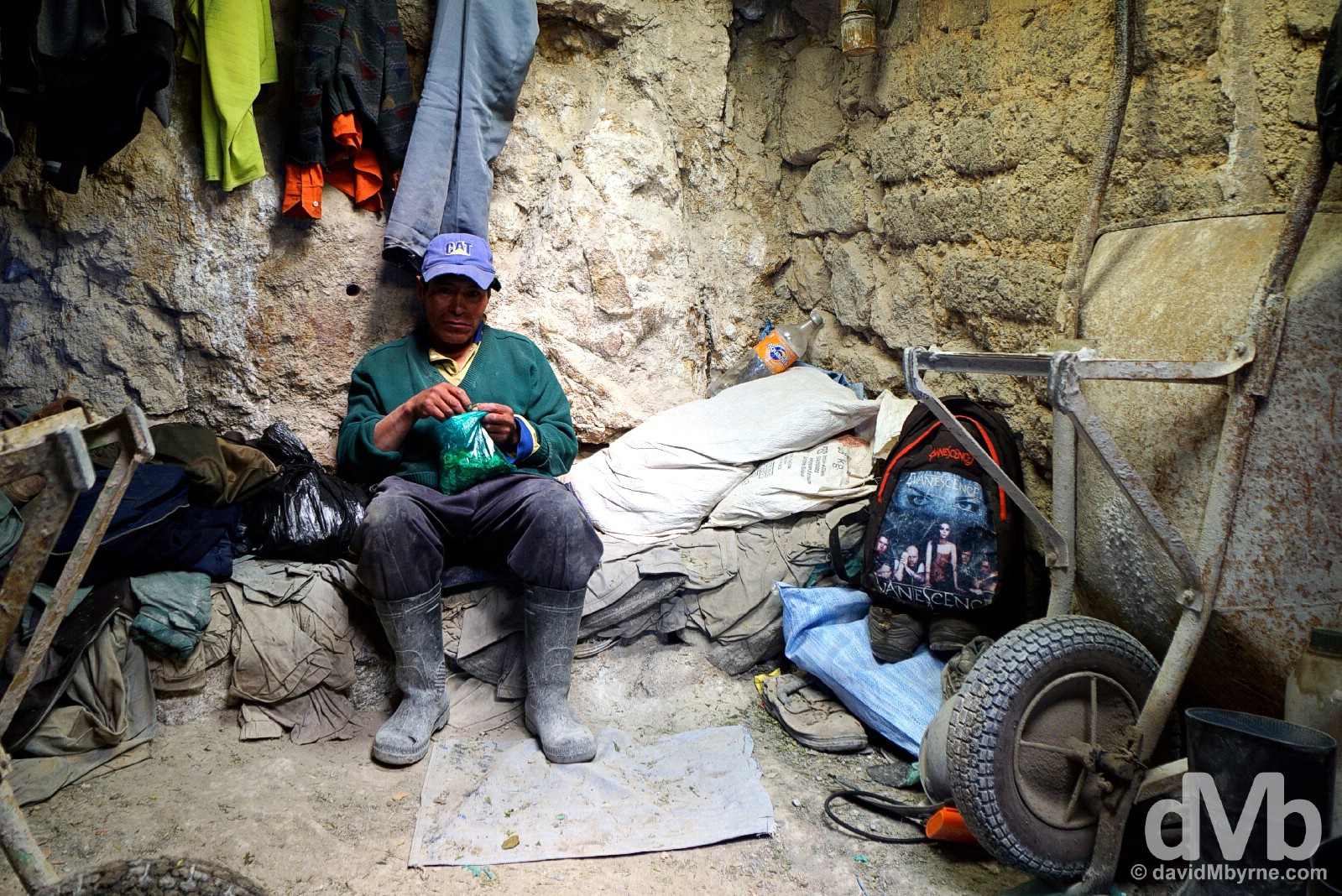2015 In Review
Wow. 2015. What a year. From ringing in the year from the my old haunt of Seoul, South Korea, to flying home from Sao Paulo, Brazil, for Christmas 2015, this has been quite the year of travel. I was on the road for 48 of the 52 weeks of 2015, easily my busiest year yet. I travelled on 5 continents, including setting foot on Antarctica, my 7th and final continent, & through 38 countries or territories, 30 of which I hadn’t visited before; I travelled many, many thousands of miles; I have walked thousands of kilometres around hundreds of cities; I slept in hundreds of different beds & on dozens of modes of transport; I’ve seen many sights that will resonate with me for years to come, and I’ve seen places that I’ve already forgotten about; I met many top-drawer people, & I’ve met some douchbags, too; I’ve been hot, and I’ve been cold. I’ve had many, many highs, and a few lows. And of course, I’ve taken a countless number of photographs. As I said it has been quite the year. This is it in review.
Plotting 48 Weeks of Travel on 5 Continents & Through 38 Countries & Territories
I tinker with my blog a lot. Way too much; the time spent getting to what you see here today could have easily seen me say learning a language to fluency. When passing time one February Sunday afternoon in a café in Bishkek, Kyrgyzstan, & while waiting for an Iranian visa that was to come through when it was too late, I added the above interactive map to my blog, one I was to use to plot my route throughout the year. For someone who loves maps, it quickly became a favourite feature of my blog, second only to the pictures I chose to display. I remember thinking when publishing the map for the first time that, and assuming my 2015 was to go as planned, the map would be an impressive sight come the end of the year. For the most part 2015 did go as planned – save for Iran & a cancelled, because of Ebola, February jaunt to North Korea – the completed map does look impressive, even if I do say so myself. A grin-inducing memento from an unforgettable year.
Picking The Best of 2015
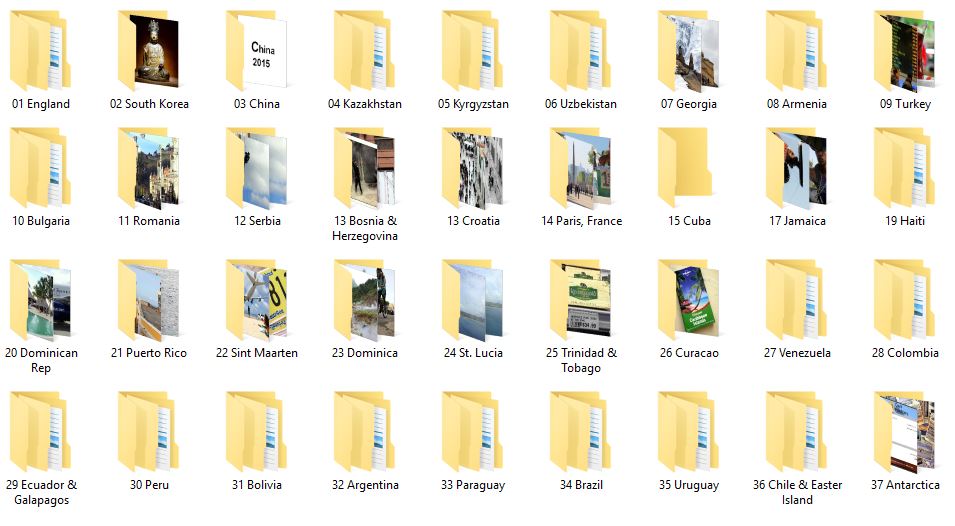
2015 || Thirty-six folders of travel photography. Hundreds of good images, thousands of bad ones.
All of my previous yearly recaps have started with me lamenting about the same thing – how hard a chore it is to select favourite images from the year that was. Suffice to say 2015 is no different. I find everywhere photogenic – as a travel photographer should – but some locations I travelled to in 2015 were immensely photogenic: the historic Silk Road towns of Uzbekistan; the Caucasus mountain scenery of Georgia; the changing, rum-fuelled time warp that is Cuba; the beaches & palm trees of the Caribbean; the awe-inspiring scenery of Andean South America, specifically the Titicaca region; the ruggedness & raw beauty of southern Patagonia; & of course the winter wonderland scenery, wildlife, and the endless light that is summer in Antarctica. I could easily fill a Top Ten of 2015 or the like with images from each of these locations alone, ignoring all the others. Needless to say that wouldn’t work. So, and to give everywhere a fair shake, I’m breaking it down into months of the year with 3 images from each month. Even that’s a chore, an impossible task for most months, and it means I’ll have more than just 10 pictures from the year (34 actually). But I have to do something. I want to do something. So here’s a month-by-month recap of my mammoth year in travel & photography for 2015.
Best Of 2015 Selection
January
Countries Travelled || South Korea
A quiet start to a busy year, the calm before the storm. I spent January of this year in South Korea tending to dwindling work commitments. I didn’t have my camera out much during the month, the notable exception being a late January visit to the National Museum of Korea, the country’s most impressive & one of the world’s largest museums.
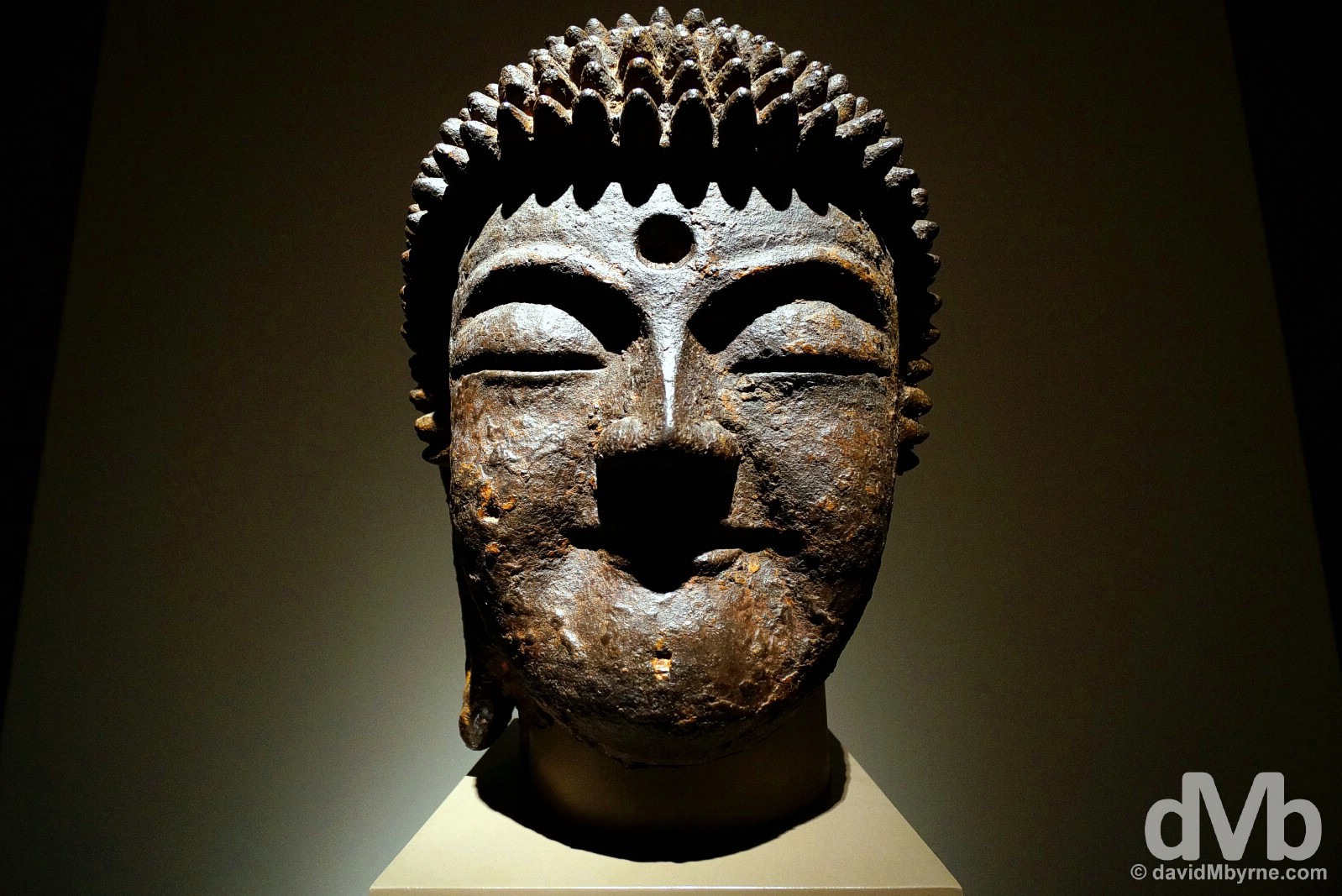
01 – A Bodhisattva on display in the National Museum of Korea, Seoul, South Korea. January 25
February
Countries Travelled || China, Kazakhstan, Kyrgyzstan
February saw me, and as I have done many times over the years, set out from South Korea, heading westward through China & into Central Asia. By the end of the month I had spent time in Kazakhstan & Kyrgyzstan and was en route to Uzbekistan.
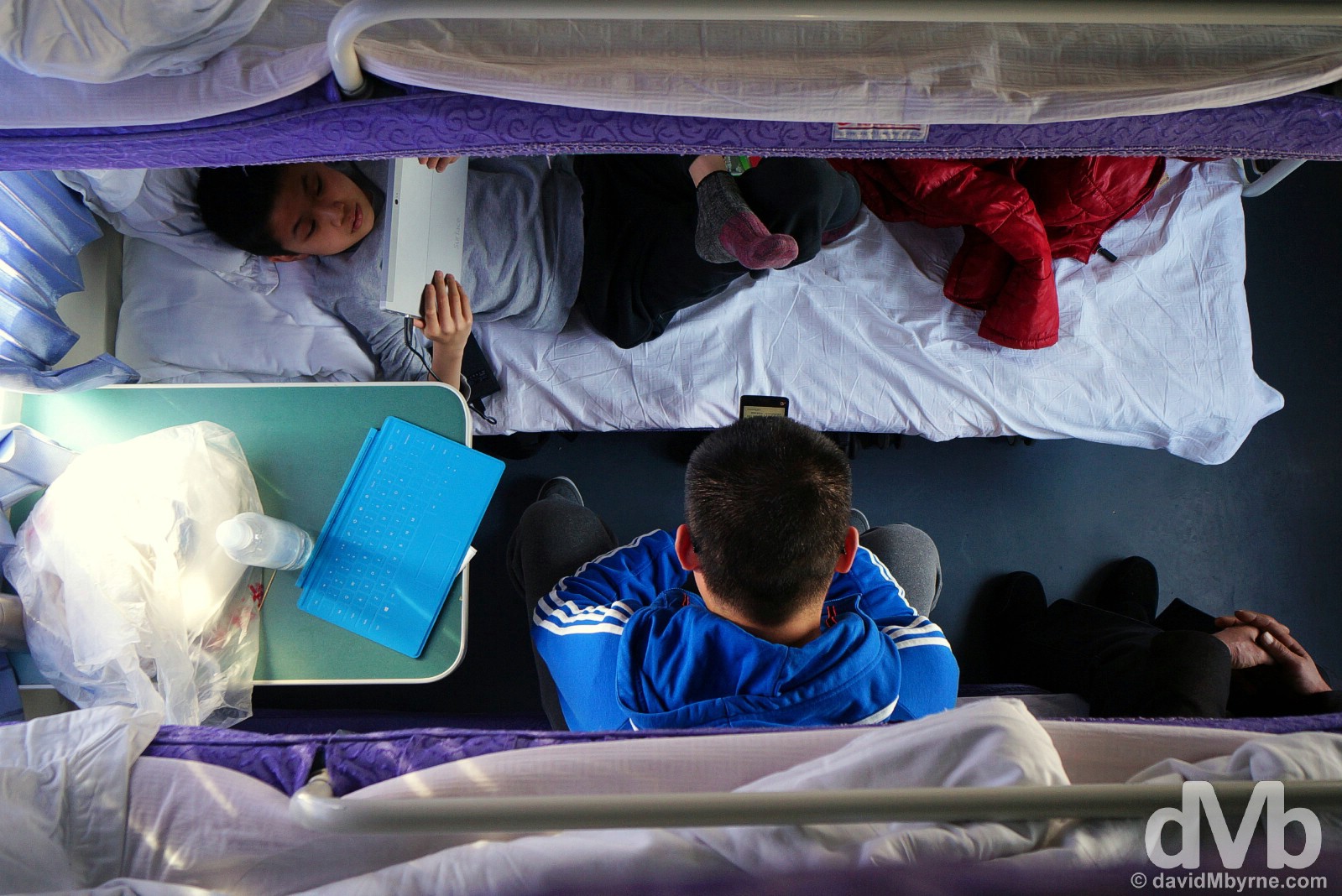
02 – Hard sleeper carriage 8 on the daily T177 Beijing to Urumqi train, China. February 9 || As a location, China is of very little interest to me these days, a consequence of having travelled extensively in the country in the past. In fact, the more I visit China, as I always do of late en route to somewhere else, somewhere better, the more I seem dislike it and all things Chinese. The primary reason for what was my sixth visit to Beijing in early February was to embark on a trip to North Korea. When that was cancelled – because of the Ebola outbreak in West Africa, which is nowhere near the Korean Peninsula – I was able to head west towards Central Asia sooner than planned. And I did. It was from my top bunk of the hard sleeper carriage I rode in during a 39-hour train ride from the Chinese capital to Urumqi in the west of the country, a typically large & uninspiring Chinese city that claims to be the largest city in the world furthest from any the sea or ocean, that I captured my favourite picture from the month of February. To me it sums up a long train journey beautifully as one lounges while striving to pass one mundane hour after one mundane hour. || First posted from the road in the entry China 2015 ||
My second & third favourite images of the month were both captured in Kazakhstan, Central Asia’s largest, by some way, country & a location I really enjoyed.
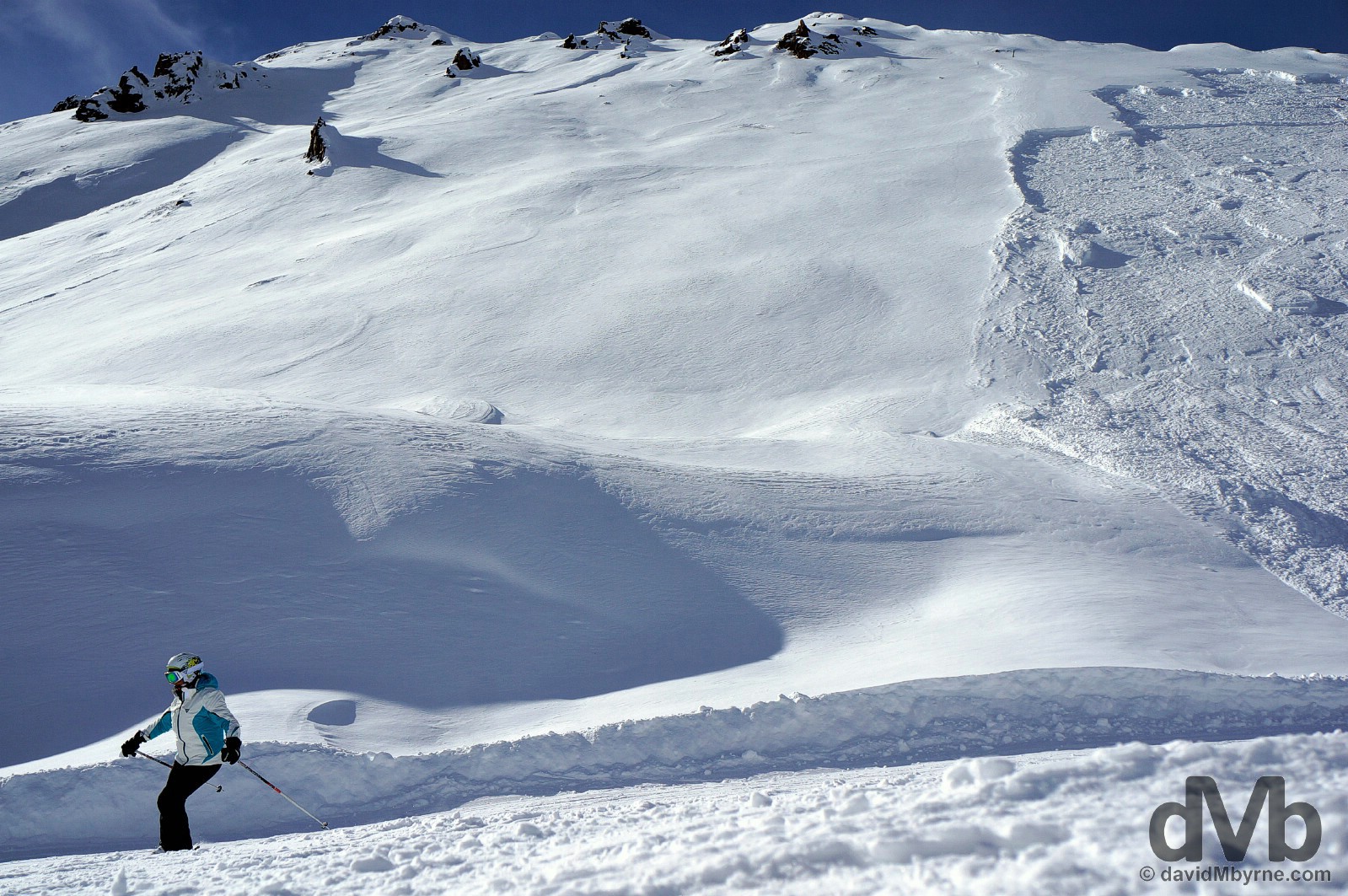
03 – Shymbulak Ski Resort, Zailiysky Alatau range, southern Kazakhstan. February 14 || Almaty in the south of the country is Kazakhstan’s leafy former capital. It was my first stop in Central Asia. I liked the city, finding its obvious Russification strangely comforting. On a day trip from the city I captured this image of a skier setting out on a run from the 3,180-metre high Talgar Pass, the highest point of the Shymbulak Ski Resort in the Zailiysky Alatau range south of Almaty & very near the border with neighbouring Kyrgyzstan. || First posted from the road in the entry Kazakhstan 2015 ||
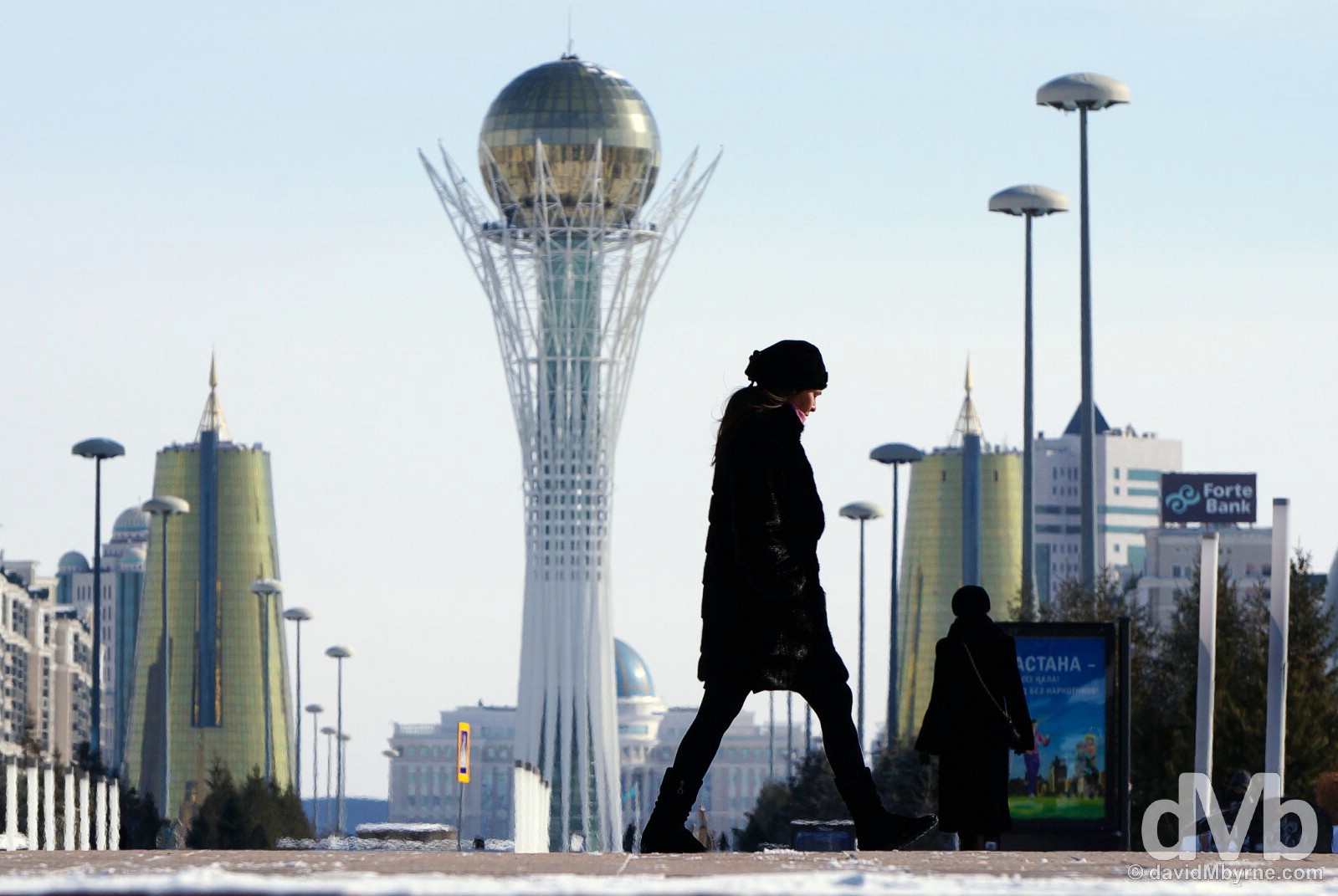
04 – Looking east up Nurzhol Bulvar, the 2 kilometer long governmental & monumental zone in Astana, Kazakhstan. February 18 || I’d never before been as cold. Ever. And I don’t want to be this cold again. The mercury said -34 Celsius but the windchill ratcheted up the hurt when I was in Astana, a.k.a. the Dubai of the Steppes, the new futuristic Kazakh capital on the northern windswept steppe, the petrodollar boom showcase city for the whole Central Asian region. A sterile place with little to no sense of history or culture, the city is at least photogenic thanks to its array of bizarre, futuristic architecture. And that’s why I loved Astana. || First posted from the road in the entry Kazakhstan 2015 ||
March
Countries Travelled || Kyrgyzstan, Uzbekistan, Russia, Georgia, Armenia, Turkey, Bulgaria, Romania
The last day of March this year saw me arriving in Bucharest, Romania. The start of the month saw me coming to the end of a long, ultimately fruitless wait in the Soviet architectural nirvana that is the Kyrgyzstan capital of Bishkek for an Iranian visa, one that was finally approved, albeit long after I’d left the region behind & long after I’d given up hope of visiting Iran on this particular jaunt. Coming shortly after the cancellation of the North Korea trip, the failure to get to Iran was another blow. Thankfully, and as it turned out, it was the last blip in my travel plans for the entire year – everything else was to go to plan.
In traversing Central Asia, passing through the Caucasus & arriving in the Balkans, I covered a lot of ground in March, and took a lot of pictures. The churches & early Christian UNESCO-listed monasteries of Armenia, the world’s first Christian nation, were a treat, as was the Soviet-era architecture of Kyrgyzstan & the medieval fortresses of Bulgaria. History. So much history. Everywhere. However, it was the mind-blowing Islamic architecture & people of Uzbekistan, in the heart of the ancient Silk Road, & the epic Caucasus mountain scenery of Georgia that were the main highlights of the month, and not just photographically.
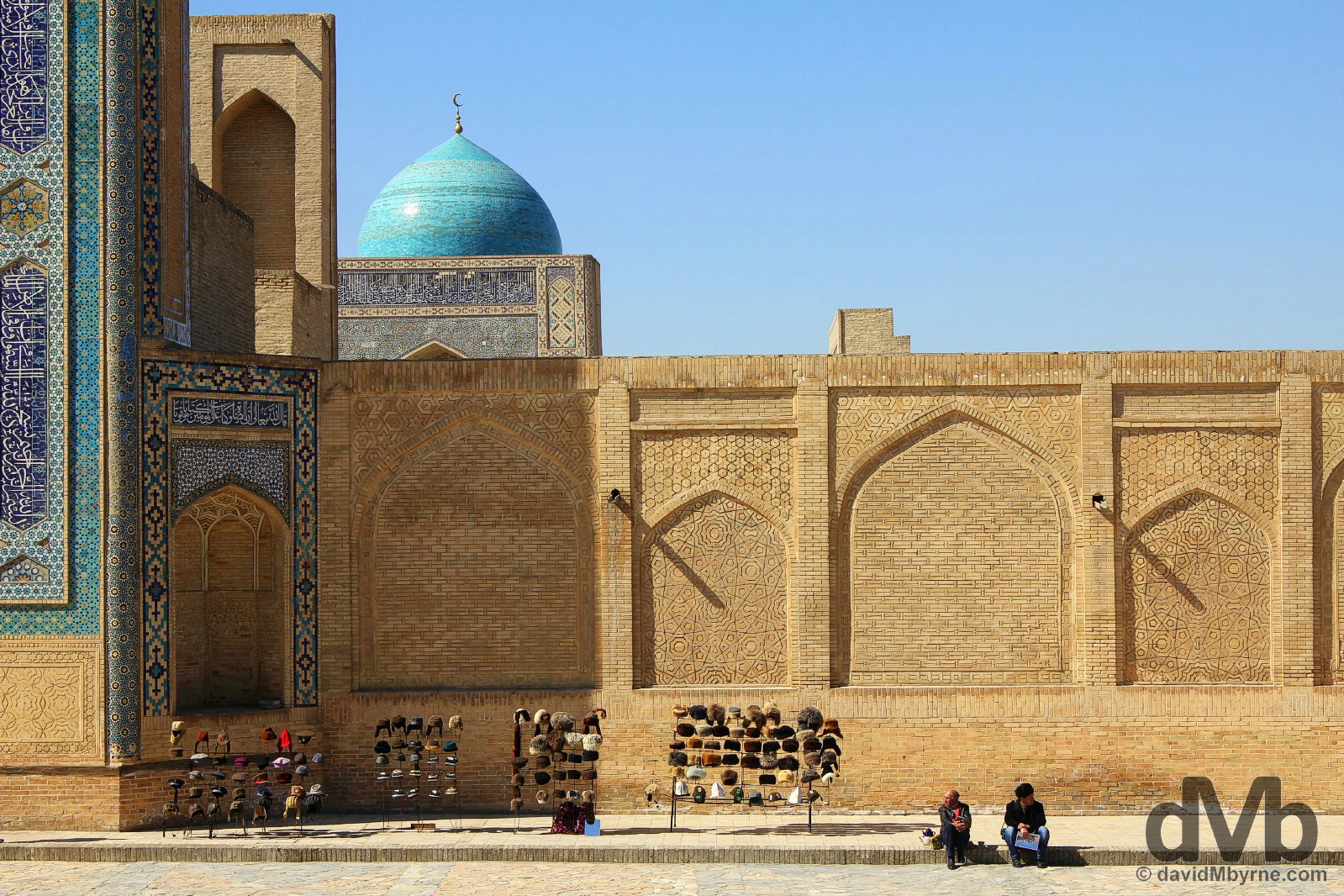
05 – Sitting by the walls of the Kalon Mosque as seen from the Mir-i-Arab Medressa in Bukhara, Uzbekistan. March 12 || I’d read about the Islamic architecture of the ancient Uzbek Silk Road towns of Samarkand & Bukhara prior to getting to the region. Of course I had. I’d also visited a few mosques & madrassas in the Uzbek capital of Tashkent, Central Asia’s largest city, prior to getting to both locations. But nothing can really prepare you for your first glimpse of the towering distinctive turquoise-blue domes, mind-boggling tilework & crumbling grandeur of the many unique, audacious & larger-than-life monuments that await in both Samarkand & Bukhara, and to a lesser extent Khiva, all of which combine to form the greatest collection of ancient Islamic architecture on the planet. Samarkand was special, Bukhara more so. The so-called City of Museums & according to UNESCO the most complete example of a medieval city in Central Asia, I spent days poking around the inside & outside of the buildings in the city’s compact UNESCO-listed Old Town, all the while soaking up the atmosphere, fighting the dust, & sizing up shots. But this shot, one of locals sitting by the walls of the city’s famed Kalon Mosque as seen from the steps of the Mir-i-Arab Medressa, took no planning; it was a quick point-and-shoot capture while exiting the madressa, one that turned out to be my favourite capture of the month. || First posted from the road in the entry Uzbekistan ||
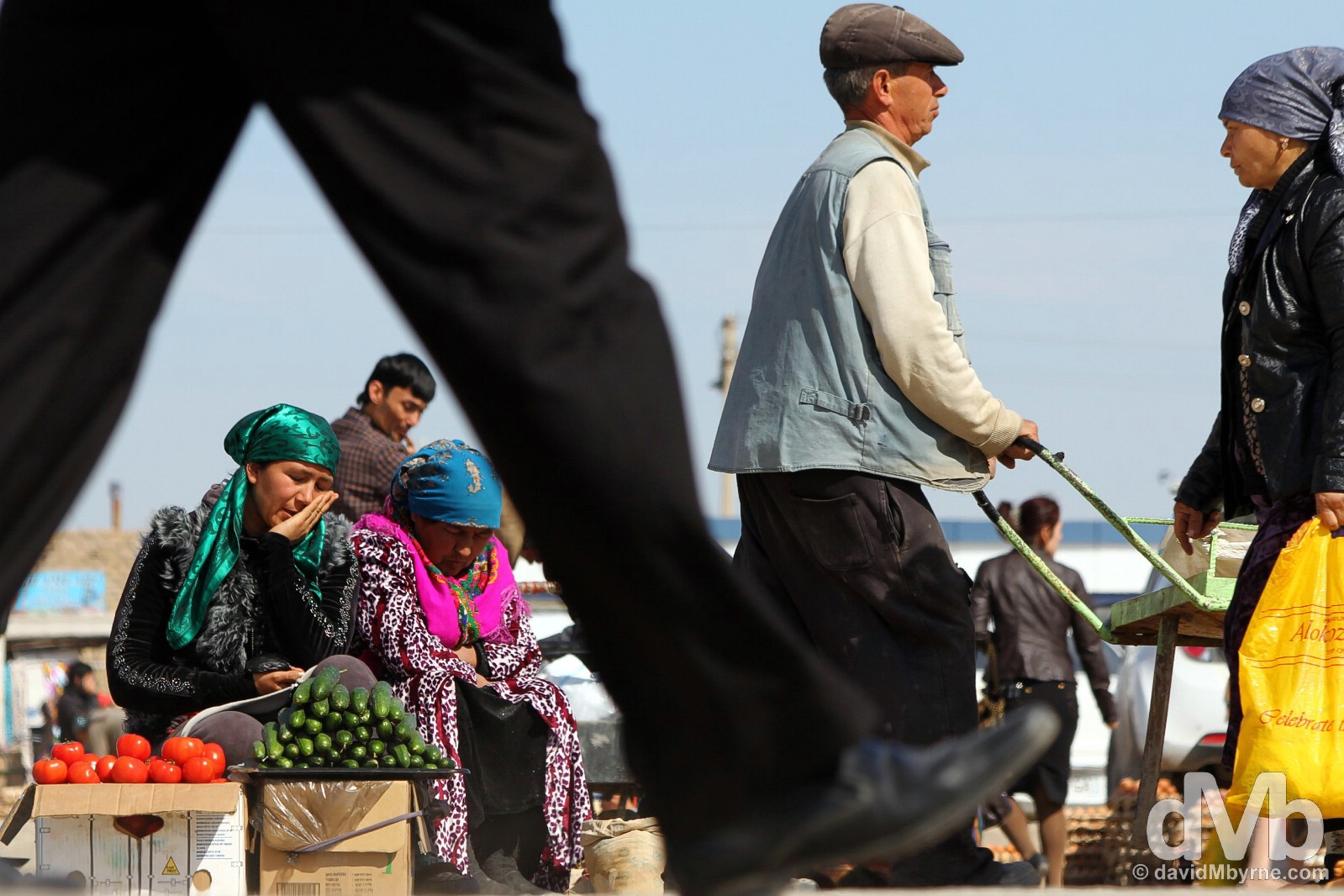
06 – Dekhon Bazaar in Khiva, Uzbekistan. March 14 || Another favourite image from March was captured in the Uzbek town of Khiva, a town of fantastically preserved mud-brick architecture, a UNESCO-listed former slave outpost in the remote Uzbek Khorezm oasis that was the last resting-place of caravans before crossing the desert to Persia. The town, the best preserved medieval city in Central Asia, if not the Islamic world, was just the latest Central Asia highlight for me, not least because it was/is so photogenic. I captured this image in the city’s main market, the Dekhon Bazaar. Located just outside the mud-brick walls of the city’s Old Town, this was once a biggest slave market in Central Asia. Today it’s filled with haphazard stalls selling the Central Asia market stalwarts of live & dismembered animals, dodgy beauty products, assorted spices & vegetables. It’s a colourful, busy place to be. || First posted from the road in the entry Uzbekistan ||
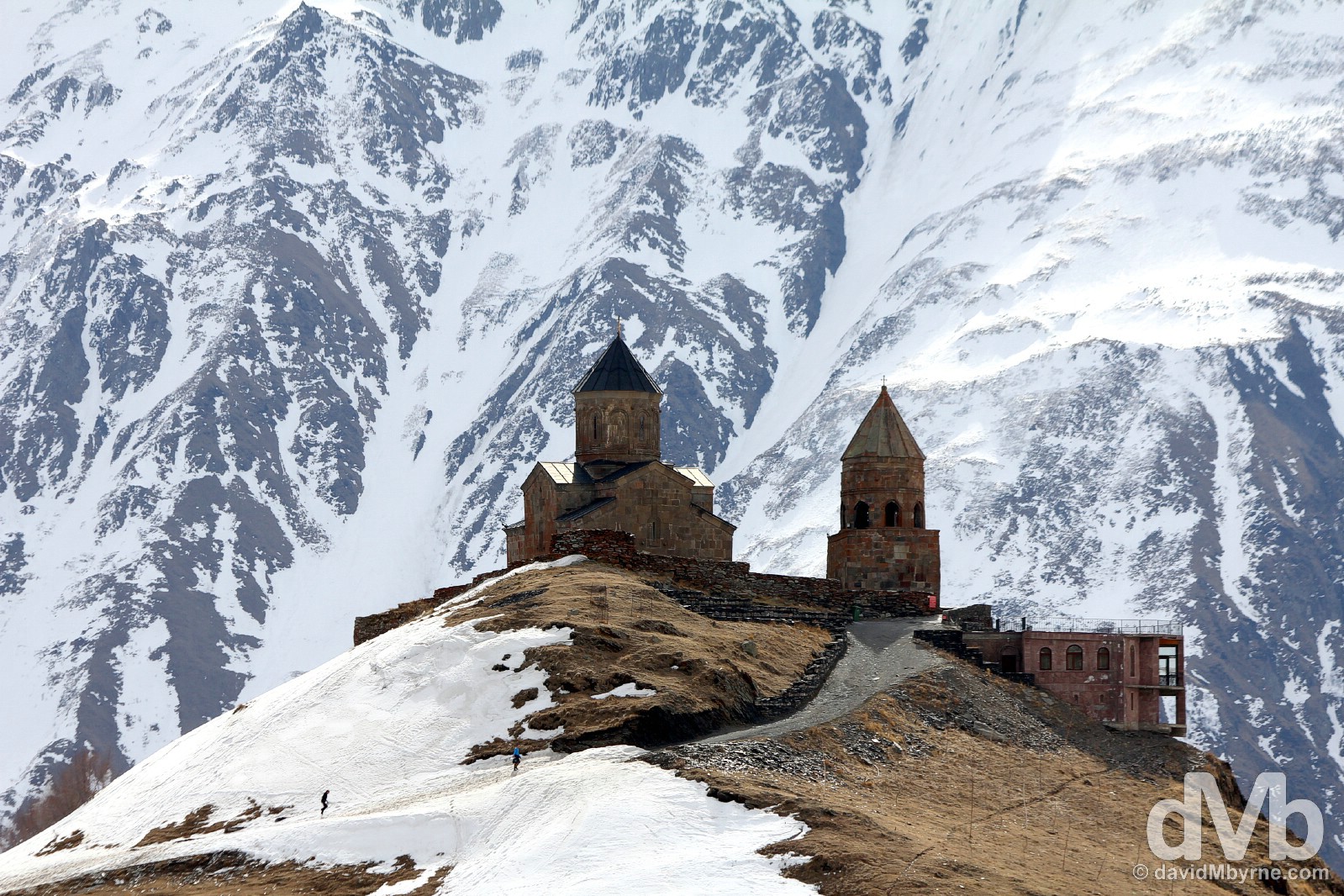
07 – Approaching the Tsminda Sameba/Holy Trinity Church above the village of Stepantsminda in northern Georgia. March 28 || I’ll freely admit to not knowing a whole lot about Georgia before March of this year. The country in the Eurasian Caucasus was recommended to me, a great recommendation as it turned out – the time spent there en route from Central Asia to the Balkans turned out to be a scenic highlight of the year. There’s more to Georgia than scenery, lots more – thousands of years of history, hospitable locals, a unique cuisine, & a likeable capital of Tbilisi to name but a few. But it was the combination of the country’s unique & distinctive Svan stone towers & churches set against the backdrop of some of the most stunning scenery on the planet that was to be the highlight of Georgia for me. Known for placing their churches, a fusion of two church styles & the quintessential symbol of the country, in lofty places, the Georgians really outdid themselves by erecting the Tsminda Sameba (Holy Trinity) Church overlooking the village of Stepantsminda/Kazbegi, some 180 kilometres north of Tbilisi at the end of the so-called Georgian Military Highway, a winding mountain road connecting the capital to the Russian border. I extended my time in the country to visit this location. I’m glad I did as it ended up providing me with one of my favourite captures of the year. || First posted from the road in the entry Georgia ||
April
Countries Travelled || Romania, Serbia, Bosnia and Herzegovina, Croatia, France, Cuba
I made it home for two weeks in April, stopping off en route from the chill & snow of the Balkans to the heat & sand of the Caribbean. Talk about contrasts. Picking a favourite trio of captures from this month was a challenge. I loved the dairy landscapes & fairy-tale castles of Transylvania in Romania; despite obvious signs of its recent warring past, the quirkiness & beauty of the Serbian capital of Belgrade pleasantly surprised me; as a result of this month, infamous, history-rich & tolerant Sarajevo in Bosnia and Herzegovina is now easily one of my favorite cities in Europe; I finally got to see what all the fuss was about with admittedly beautiful but overhyped & overrun Dubrovnik, Croatia; seven years after my first visit, I – Oh là là – was reacquainted with Paris, France; and I ended the month somewhat bedazzled in an effort to get to grips with Cuba, my introduction to the rum, palm trees & tropical breezes of the Caribbean and a location like no other.
Whittling down to a selection of three images for April was tough. Choosing my favourite from the three I did pick, which all focus strongly on people, was next to impossible so here they are presented in chronological order.
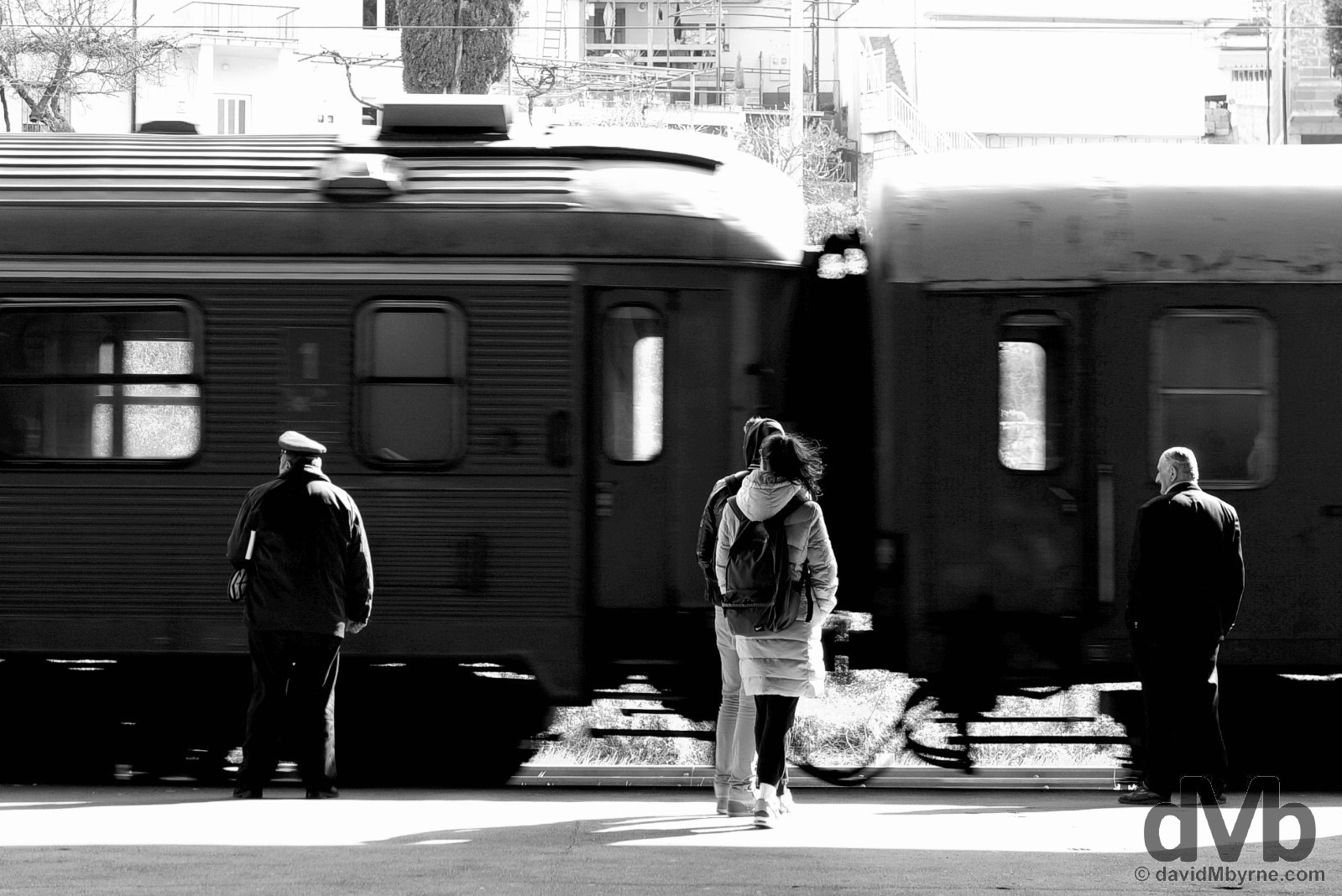
08 – On the platform of the train station in Sarajevo, Bosnia and Herzegovina. April 6 || I loved Sarajevo, the Bosnia & Herzegovinian capital where it snowed heavily for large portions of my time in the city. A prominent centre of culture in the Balkans, Europe’s Jerusalem is famous for its traditional cultural and religious diversity, with adherents of four religions – Islam, Orthodoxy, Judaism and Catholicism – coexisting for centuries, especially in the Bascarsija, the city’s amazing old bazaar & its historical & cultural centre. Sarajevo has history clout too: it had Europe’s first electric tram system; it was the scene of the assassination of Francis Ferdinand in 1914 which precipitated World War I; the city hosted the 1984 Winter Olympics; & most recently Sarajevo gained infamy by suffering through the longest siege of a city in the history of modern warfare, an almost 4 year, 1,425-day affair during the early 90s Bosnian War. I’ve yet to post my images from my time in the city, a definite highlight of the year that was, but this is an image I captured early in the morning on the 6th day of the month while waiting for my train to depart Sarajevo for Mostar. One of Europe’s best train journeys took me away from one of its very best cities. I’d revisit in a heartbeat.
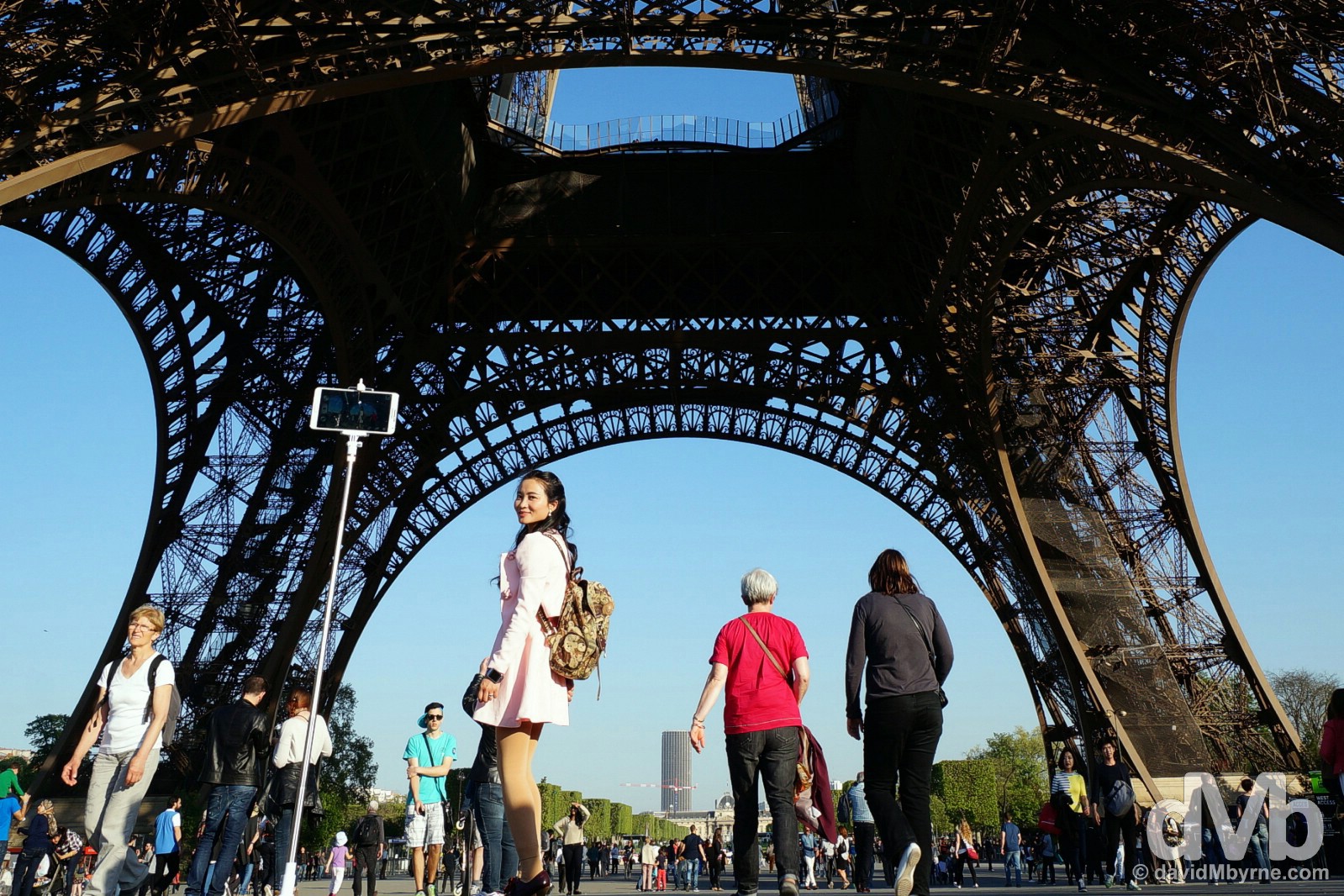
09 – Selfie Queen. Eiffel Tower, Paris, France. April 23 || I was looking forward to getting back to Paris, even if it was for just a day, time enough to scoot around the city’s many fabled highlights (if, like me, you’re a quick scooter). En route to summer in the Caribbean, Paris itself on this late-April day was a balmy mid-twenties Celsius. It was also busy, very busy, and I found myself grateful that I wasn’t here in the middle of the (even) busier summer period. I also found myself bemused by this Selfie Queen who kept extraordinarily busy capturing herself in various poses in the vicinity of the city’s iconic Eiffel Tower. Her selfie stick was like nothing I’d ever seen before, boasting as it did three little tripod-esque feet enabling her to concentrate fully on the task of posing, something she did with aplomb. She was so engaged in self-love, & having so much fun with herself, that I in turn had so much fun observing her having fun – for some reason I find people with selfie sticks fascinating. I don’t think she even noticed me capturing what turned out to be one of my favourite pictures of the year even though, with a wide-angle lens, I was right under her nose, not to mention the Eiffel Tower itself. || First posted from the road in the entry Paris 2015 ||
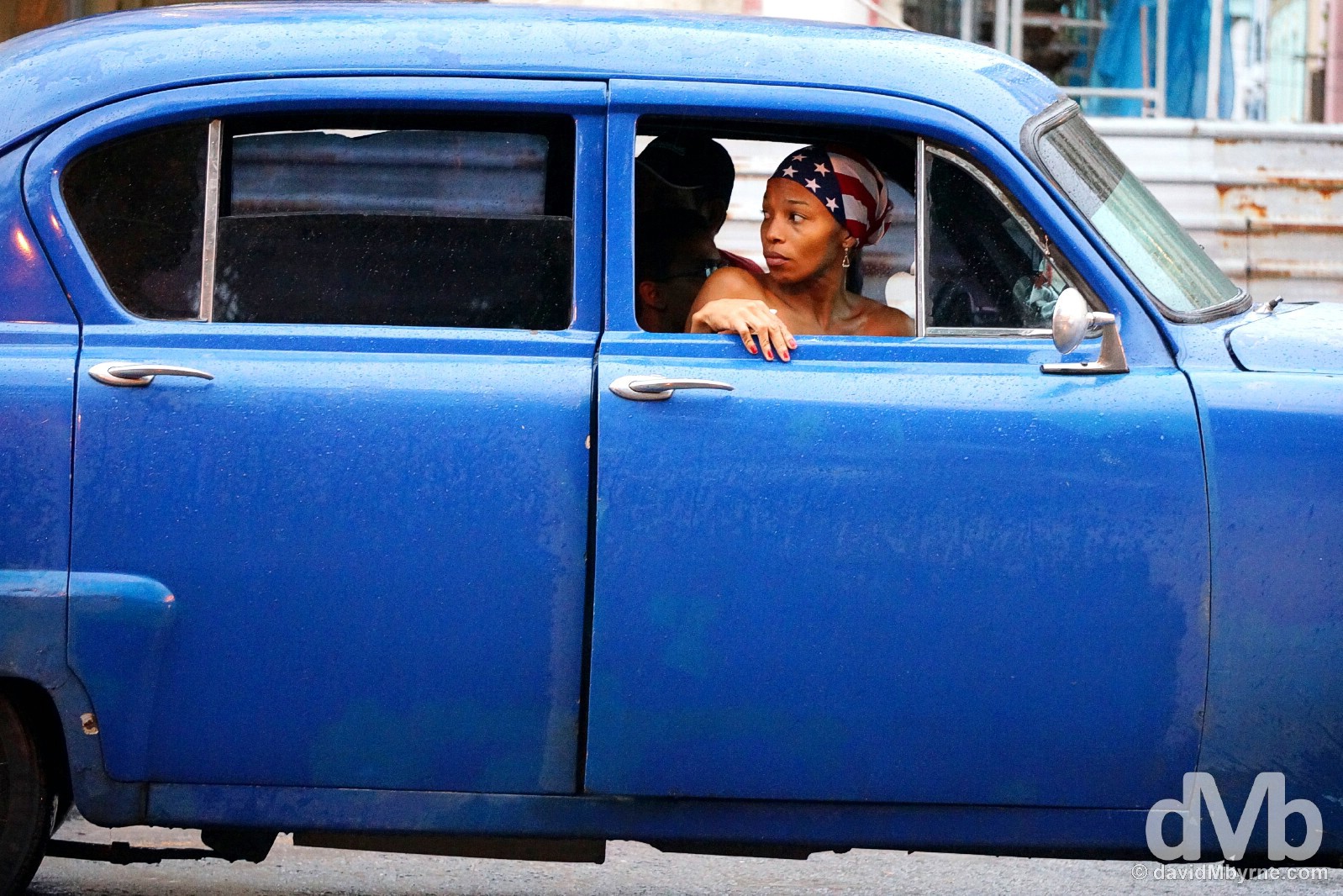
10 – On the streets of Havana, Cuba. April 30 || I spent the last week of the month in Cuba. An all-inclusive resort in Cuba. It was/is hardly an authentic look at a country that hides very little but it was still an enjoyable, albeit blurry, rum-fuelled introduction to the country. On the penultimate day of the month I left the resort to embark on some independent travel around the country. This image was captured on the colourful but crumbling time warp streets of Havana on what was my first full day in the Cuban capital. April, and as the Gregorian calendar would have it, rolled into May & there was to be plenty more to come from my time in Cuba but I think this might just be my favourite capture from my first, but by no means last, visit to that extraordinary country.
May
Countries/Territories Travelled || Cuba, Cayman Islands, Jamaica, Haiti, Dominican Republic, Puerto Rico
May of this year was to be the first of two months spent travelling west to east through the Greater & Lesser Antilles, a.k.a. the Caribbean, en route to South America. By June I had island-hopped my way to the Lesser Antilles but May was reserved for the Greater Antilles, the group of islands in the western Caribbean, the western West Indies – Cuba, Cayman Islands, Jamaica, Hispaniola (Haiti & Dominican Republic) & the American commonwealth of Puerto Rico. This was the first of two months of Caribbean sun, sea, sand, laid-back vibes & tropical breezes. There was lots of colour, too, my abiding memory of a region I didn’t expect to like as much as I actually did – I’m not a beach bum or water baby, the sun doesn’t agree with me, & the Caribbean region itself boasts few so-called must-see attractions, it’s expensive, &, short of owning your own yacht, it can be somewhat of a challenge to get around. But for me the Caribbean was a treat, one that threw up more than a few photogenic highlights from the year that was.
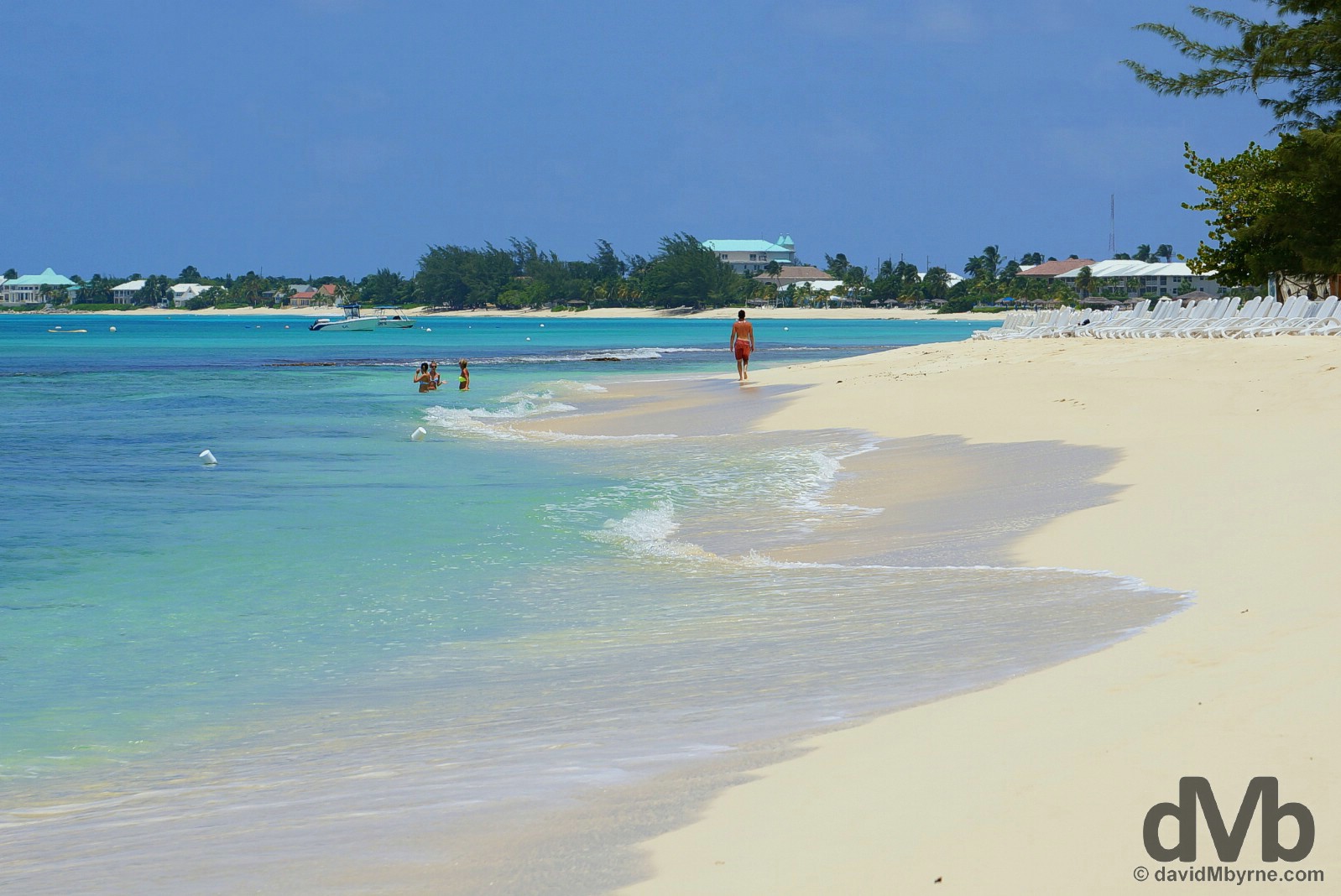
11 – Seven Mile Beach on Grand Cayman, Cayman Islands, Greater Antilles. May 12 || Needless to say, the Caribbean is renowned for its cruises and all-inclusive resort holidays. It can be done on a budget but it’s not your typical backpacker or budget traveller destination. I stopped off on Grand Cayman, the largest of the glossy Cayman Islands, en route from Cuba to Jamaica. Of all the islands I was to visit over the coming weeks, this was the flashiest & least budget friendly. Not surprising really – the uber-rich tax free banking haven & glitzy shopping mecca is luxury personified, a UK overseas territory but one that looks and feels more Miami than Manchester. I was only supposed to spend a night here, a brief lay over, but missing the first of three flights I was to miss in total while in the region (‘Relax mon, it’s the Caribbean!’) meant I had an extra day at my disposal, a day I put to good use by hiring a car to tour the 200 km² island, something easily done in a day. This is the fabulous white coral-sand Seven Mile Beach on the island’s commercialised western coastline just north of the capital George Town. Compared to the rest of the (very) low-key island, this is the most crowded and most developed area of Grand Cayman, boasting the largest concentration high-end, beach-facing resorts & visitors on the island (that said it’s anything but crowded). It’s also the island’s best beach. Indeed Caribbean Travel and Life Magazine, among others, claim it the best beach in the whole Caribbean, quite the call given the competition. I tend to agree. While not a beach bum, I did spend a lot of time while in the Caribbean walking – flip-flops in one hand, camera in the other – from one end of idyllic stretches of soft Caribbean sand to the other and this was my favourite beach of the lot. I mean, look at it.
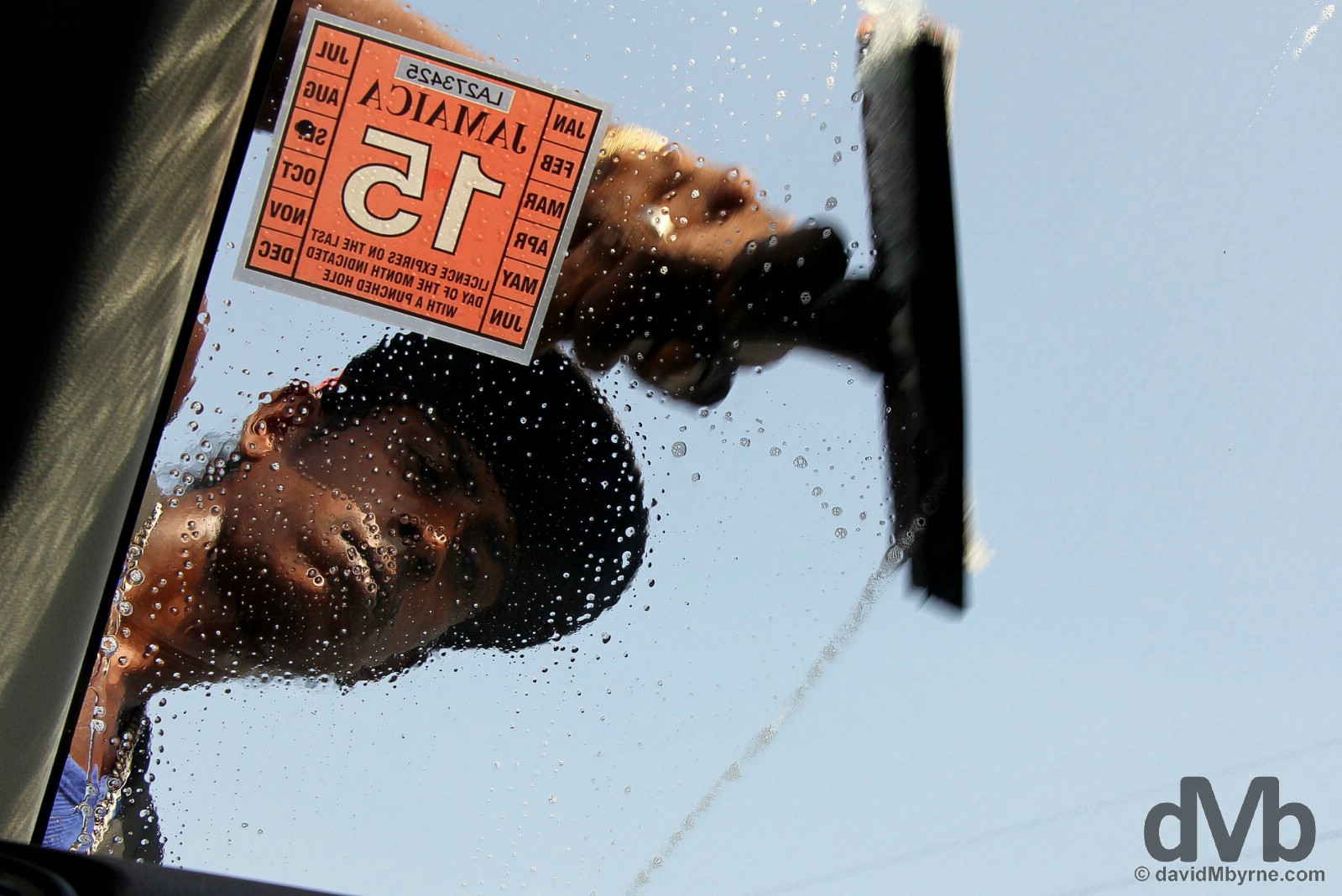
12 – Traffic light service in Kingston, Jamaica, Greater Antilles. May 13 || And now for something a little different. Jamaica is also well-known for its resorts & beaches. Indeed, it’s the reason most who visit the island do so. But that’s not a side of the island I saw for the time I spent driving around its 11,000 km² area – Jamaica is about one-eighth the size of Ireland. Kingston, the capital, was my introduction to the land of Rastafarians, reggae, dreadlocks & jerk chicken. Not a good introduction to the country & not somewhere that will or should detain you for long, if at all, I captured this image at traffic lights while navigating through the frenzied streets of the city in a bid to escape, to find the road out. This was shortly after arriving in the country and just after picking up the hire car. I did spend more time in Kingston at the end of my Jamaican adventure but I still left the city with little good to say about it. But at least it provided me with one of my favourite images of the year. || See the dedicated Jamaica entry for more from my time on the island. ||
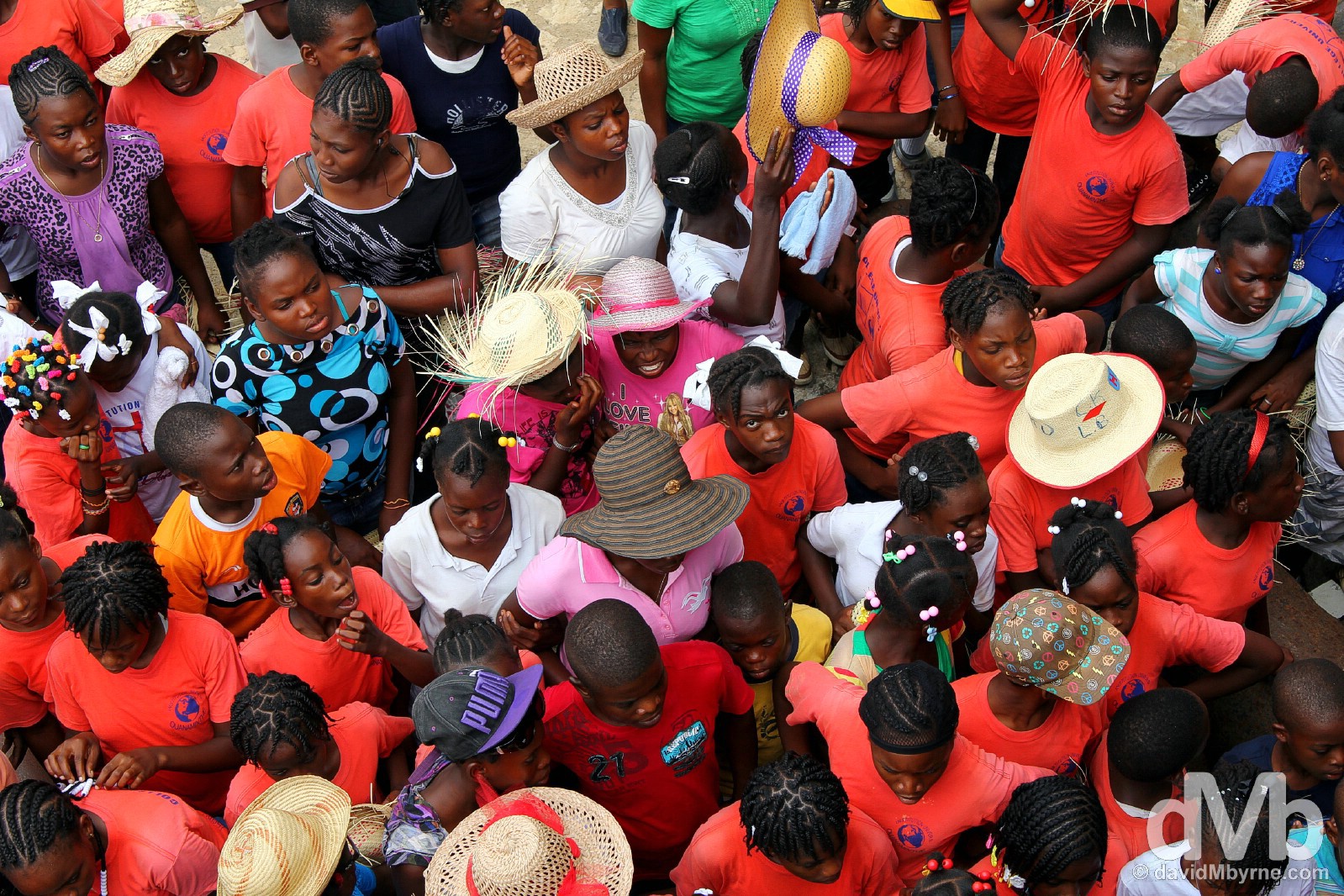
13 – School children in the grounds of the UNESCO-listed Citadelle Laferrière in northern Haiti, Hispaniola, Greater Antilles. May 22 || I flew from Kingston, Jamaica, to Port-au-Prince, Haiti, jumping out of the frying pan into the fire in the process. What can only be described as a Caribbean anomaly, Haiti is the poorest country in the western hemisphere, something that’s all too apparent on the ground. The country, still very much in rebuilding mode following the devastation of the January 2010 earthquake, doesn’t get many tourists and those who do venture here are invariably, and as I was, a subject of intense curiosity on its streets – a combination of friendly, inquisitive & suspicious eyes were on me the whole time. Being in Haiti & getting around it was tough. It was attritional, a travel challenge. It was also expensive & it relieved me of a few items I’d have rather held onto. But Haiti was very, very photogenic, as tousled locations tend to be, & trails & tribulations aside my time spent in the country is and always will be a cherished memory – the curiousness of the locals is matched only by their warmness, in spite of the daily hardships they endure. I captured many pictures of colourful Haitians on the streets of Port-au-Prince, Jacmel & Cap-Haitien but it was this image of a group of schoolchildren, with one pair of eyes looking right at me, that was my favourite of the lot, not to mention one of my favourite images of the year. It was captured in the grounds of the Citadelle Laferrière in the north of the country, the largest fortress in the Americas & the country’s only UNESCO World Heritage-listed site. || See more from my time in Haiti as posted from the road in the entry Haiti||
June
Countries/Territories Travelled || Puerto Rico, Sint Maarten/St-Martin, Dominica, Saint Lucia, Trinidad and Tobago, Curacao, Venezuela, Colombia
June brought an end to my 59-day Caribbean island hopping exploits as I twin-propped my way from the Greater Antilles & through a selection of idyllic breezy island destinations in the so-called Lesser Antilles, creeping ever closer to the South American mainland in the process. On the 21st of the month I finally made it to South American terra firma after what felt like years of trying. I was to spend the rest of the year on my penultimate continent, using it as a springboard to access my final continent, Antarctica, which I did towards the end of year. Venezuela was to be my (brief) introduction to South America, a country I was happy to breeze through en route to Colombia, somewhere that was to prove immensely photogenic & where South America for me started in earnest.
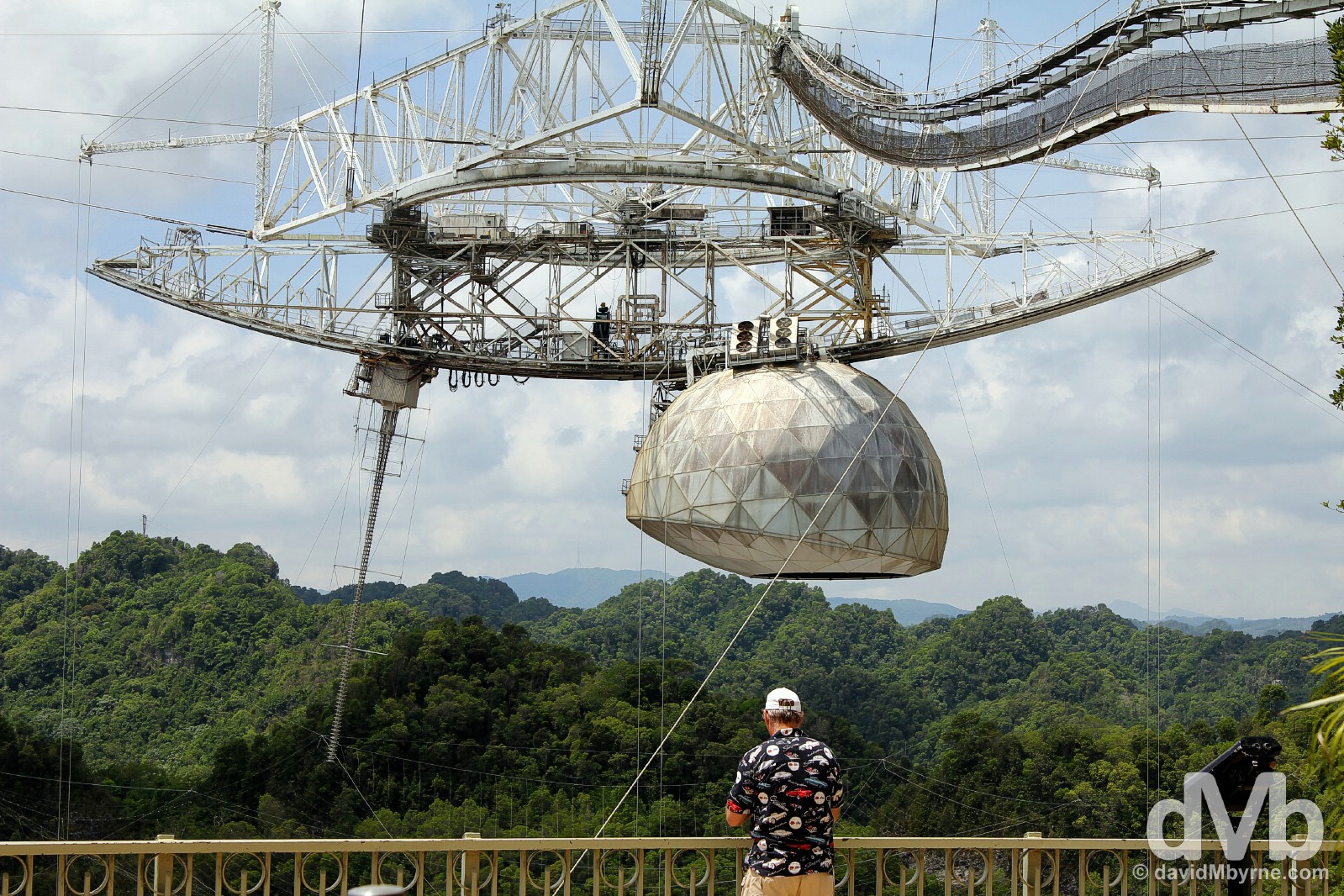
14 – At the Arecibo Observatory, Arecibo, Puerto Rico, Greater Antilles. June 4 || I loved my time in Puerto Rico, loved Puerto Rico itself, the smallest and easternmost of the Greater Antilles. I’ve thought about it a lot since leaving the island, a self-governing commonwealth with severe budget issues right now, but I still can’t really pinpoint why the island resonated with me as it did. It’s basically the U.S. transported to a small Caribbean island, complete with the shopping malls, fast food joints, traffic jams & general over commercialisation you’d come to expect on the mainland. Maybe it was the retail therapy; I shopped a lot in Puerto Rico’s malls. Maybe it was the beaches, some of the nicest in the Caribbean. Maybe it was the enchanting, colourful backstreets, historic forts & awesome street murals of San Juan, the capital & the 2nd oldest European settlement in the Americas. Maybe it was the sense of freedom I had in driving around the island in a hire car, the only way to really see the island; the public transport is as bad as it is on the mainland. Or maybe, just maybe, it was because I found the place so picturesque. I had no idea what to expect from Puerto Rico but it delivered a lot and if I had to fly back to one Caribbean Island in the morning it’d probably be Puerto Rico. This was my highlight of many Puerto Rican highlights, the Arecibo Radio Telescope. Completed in 1963 and measuring 305 metres (100 ft) across, it is the largest radio telescope & largest dish antenna in the world. Constructed inside a depression left by a karst sinkhole, of which there are many in the surrounding hilly karst landscape, it focuses radio waves from the sky on the moveable feed antenna, seen here, suspended above it by a mesh of steel cables – the dish itself, not seen here & made of almost 40,000 perforated aluminium panels, is fixed. To me this was an iconic Puerto Rican must-see – the observatory has appeared in many film and television productions – and to visit it was the main reason I hired a car. Although I knew I would, I found the spectacle fascinating, just one more reason why Puerto Rico was my favourite Caribbean destination. || See more from my time exploring the island in the dedicated Puerto Rico entry. ||
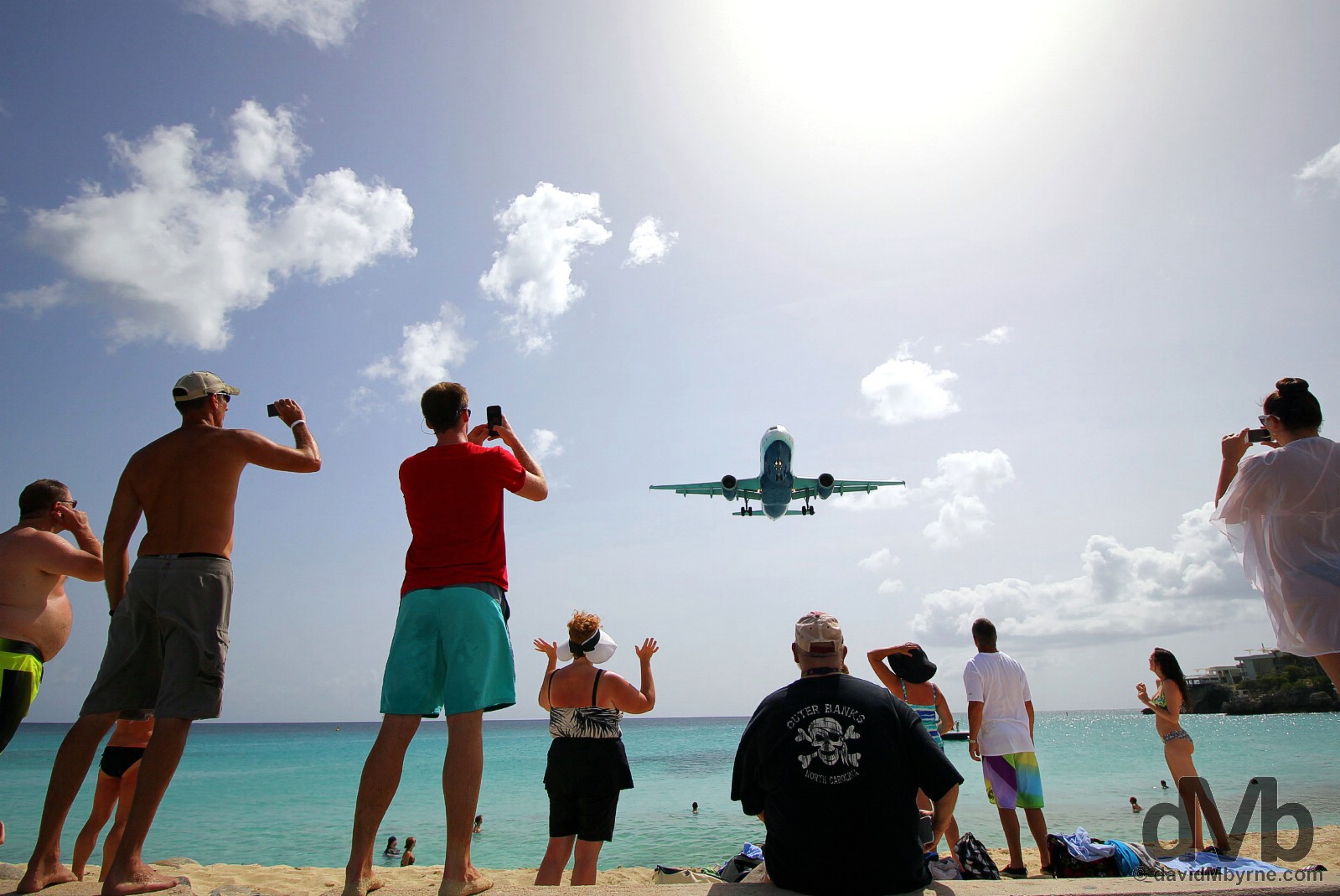
15 – A welcoming party on Maho Beach as a plane approaches Juliana Airport on Sint Maarten, Lesser Antilles. June 8 || While I ultimately ended up loving Puerto Rico, things didn’t start well there – they wouldn’t let me onto the island without having a confirmed flight out. So with limited time at my disposal when being detained by Puerto Rican/U.S. Immigration, & while using an Immigration Officer’s iPhone as a Wi-Fi hotspot, I quickly booked a flight to one of the nearest neighbouring islands. That just happened to be the half-Dutch, half-French territory of Sint Maarten/St-Martin. It’s one small Caribbean Island with two vastly contrasting outlooks – while the French side is more sedate, the Dutch side is less so with a cruise terminal, duty-free shopping, casinos, condos, sprawling resorts & thumping nightlife. I took a look around duty-free Philipsburg, the Sint Maarten capital, & Marigot, the historic St-Martin capital, but for me this particular Caribbean location was all about the world-famous approach to the island’s small Juliana Airport. Located on the Dutch side of the island, it offers unrivaled plane-spotting opportunities as massive jets – and smaller ones too – come in to land mere metres above the sands of Sint Maarten’s Maho Bay. I didn’t spend a lot of time on in Sint Maarten/St-Martin (3 nights) but most of what time I did spend on this particular Caribbean island saw me, and armed with takeoff & landing times, hanging out on this beach just waiting. It was a unique experience, a true Caribbean highlight and one that provided me with one of my favourite captures of the year. || See the dedicated Saint Martin / Sint Maarten entry for more from my time on the island. ||
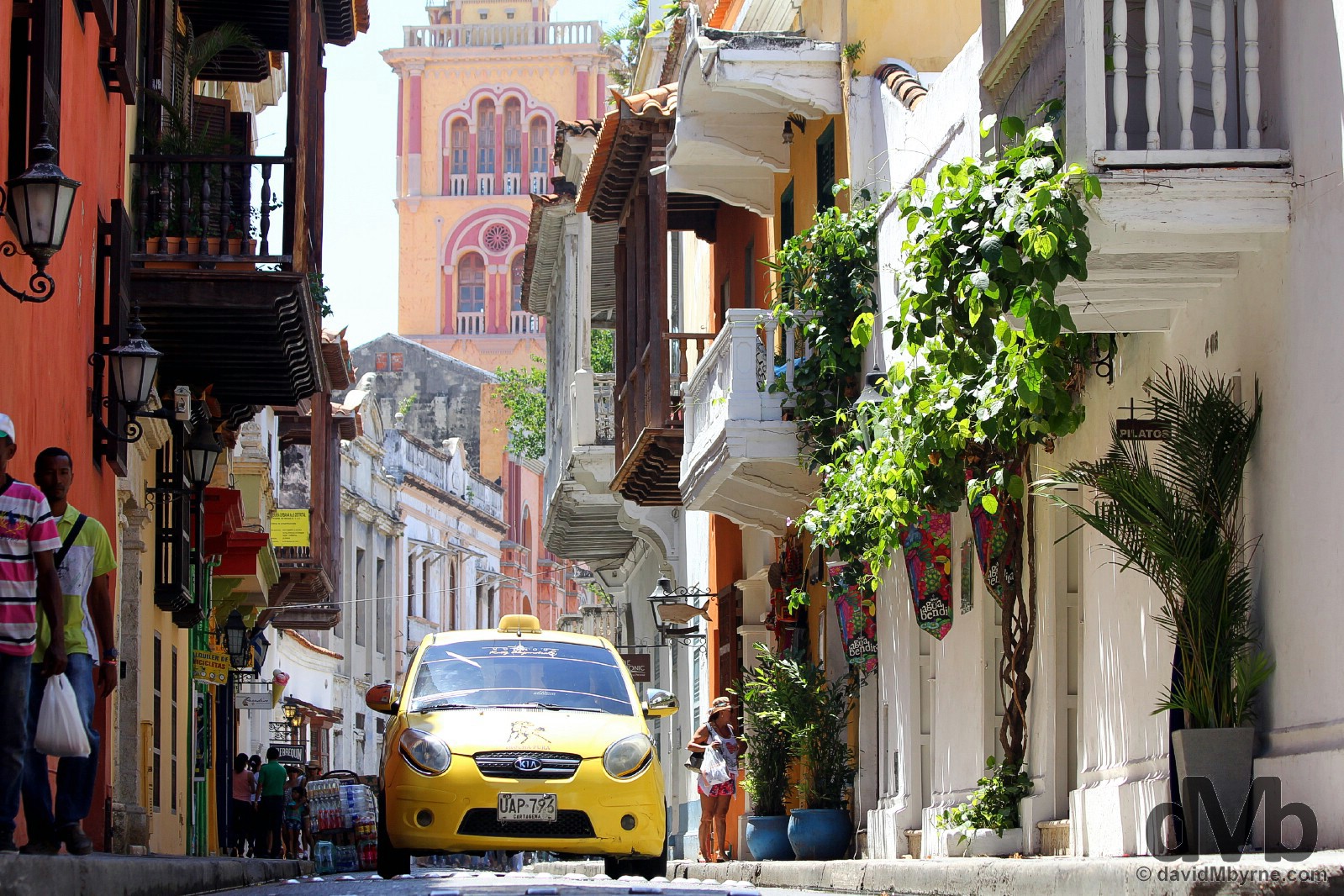
16 – Calle de la Estrella in UNESCO-listed Old Town, Cartagena, Colombia. June 25 || After 59 days I said goodbye to the Caribbean, flying from Curaçao, the popular island resort in the Netherlands Antilles just off the South American mainland & my last stop in the Lesser Antilles, to the Venezuelan city of Maracaibo, my introduction to South America. I stayed there only long enough to get nicely frustrated with Venezuela’s bizarre dual currency exchange rate & to hop in a taxi/bus combo across the border to Colombia where things were a tad more structured, more stable, & a lot more photogenic. I spent the next 10 days moving some 2000 kilometres north to south between 6 different Colombian towns and cities, all of which proved memorable – yes, even witnessing a shooting in the city of Medellin, the country’s important coffee centre, was in some strange way also memorable. Colombia had many photogenic highlights but Cartagena, the country’s colonial gem & its most beautiful city, lived up to all the hype; it was one of the most photogenic cities I’ve ever visited. Not surprising then that it also provided me with one of my favourite pictures from the year that was, that of activity on Calle de la Estrella in the city’s UNESCO-listed Old Town. || First posted from the road in the entry Colombia ||
July
Countries/Territories Travelled || Colombia, Ecuador, Peru
It was the 2nd day of the month & I had just crossed the border from Colombia into northern Ecuador. I was en route to the Ecuadorian capital of Quito, a 5 to 6 hour bus ride away. Out of the blue someone in officialdom boarded the bus and, among his routine observational chores, started handing out a flyer promoting the range of things to do and see in the country. Everyone was welcome to one – they were professionally printed in many different languages – but the intended recipients were the obvious foreigners on board, of which there was only one – me. I thought that was neat, rare promotion by a state tourism body while conducting a routine a police check, something definitely not uncommon in South America. That goes some way to understanding how important tourism is to the Ecuadorian economy and how seriously the authorities take in promoting it. And although Ecuador is one of the smallest countries on the continent there’s a lot to promote – Inca ruins, hot springs, awesome colonial architecture, the Andes and the so-called Andean ‘Avenue of Volcanoes’, the Amazon rain forest, Pacific Coast beaches &, of course, the famed Galapagos Islands. In July I sampled all Ecuador had to offer meaning it was to be one of my favourite South American countries & July was to be one of my favourite months of the year for photography.
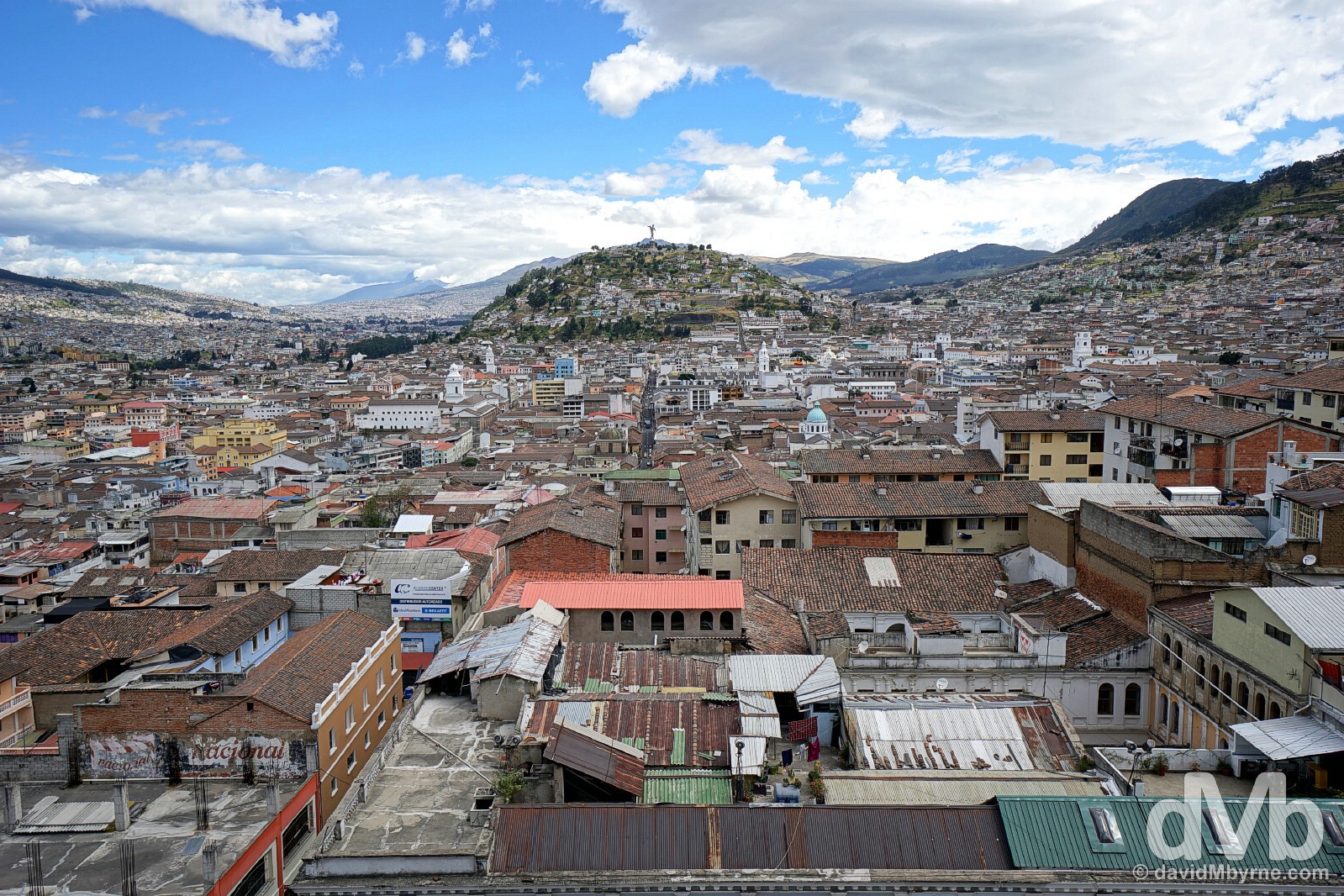
17 – A portion of Quito, Ecuador, as seen from the bell tower of the Gothic Basilica del Voto Nacional. July 4 || It was a good time to be in Ecuador, a good time to be in Quito, the Ecuador capital constructed on the foundations of an ancient Incan city. The sun was out and a visit by Pope Francis, Papa Francisco, was on the horizon, the very first South American pontiff to visit the continent. It was a big deal & the city was getting spruced up ahead of his arrival – the flags were flying, the banners were out, the blinding whites of the city’s colonial gems were getting even whiter, the streets, footpaths/sidewalks & cobbled plazas of the UNESCO-listed Old Town were being hosed down, and flowerbeds are being tended to. As I said, it was a good, photogenic time to be in the city. I captured many a picture I liked in charming Quito but this one, which didn’t even make the cut when blogging from the road, was probably my favourite of the lot. Captured on the eve of Papa Francisco’s arrival, it’s a picture looking south over the rooftops of the sprawling capital, which sits at 2,850 metres high in the Andean foothills, as captured from the bell tower of the city’s Basilica del Voto Nacional, a mammoth 1890 Gothic landmark visible from all around. || See more from Ecuador as posted from the road in the entry Ecuador ||
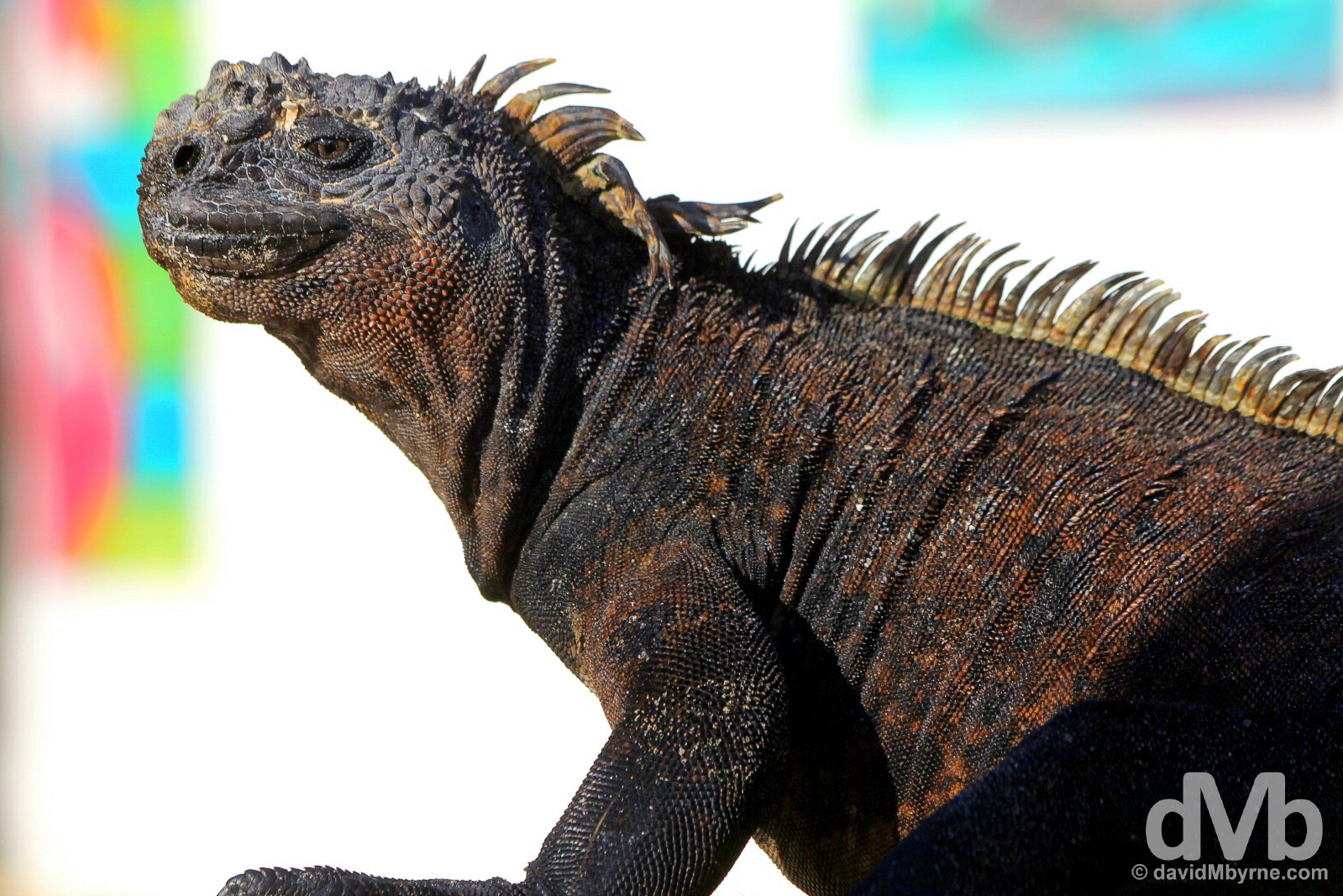
18 – A Marine Iguana basking in the sun on a beach outside Puerto Villamil, Isla Isabela, Galapagos Islands, Ecuador. July 19 || I wasn’t going to come to Ecuador and not treat myself to time on the famed Galapagos Islands, the isolated volcanic archipelago in the Pacific Ocean some 1,000 km off the Ecuadorian mainland. Considered one of the world’s foremost destinations for wildlife-viewing, it’s home to a mind-boggling array of plant and animal species, most of which are found nowhere else on the planet and the observation of which inspired a certain Charles Darwin, who visited in 1835 on board the HMS Beagle, to propose his ground-breaking and now universally accepted theory of evolution. I’m not a wildlife buff, and I’m definitely not properly equipped to photograph wildlife. But that doesn’t really matter where Galapagos is concerned as the wildlife is everywhere. Everywhere. Of course it is. As a result, and my limitations aside, the unique Galapagos fauna, and to a lesser extent the obvious sense of isolation & wow you get by just being in Galapagos, was my defining highlight of the week I spent visiting 3 of the 19 islands total, the landmass of 97% of which is protected as the UNESCO-listed Parque Nacional Galapagos. Of many wildlife images captured on Galapagos, this picture of a marine iguana sunning itself is probably my favourite, and one of my favourite captures of the year. Endemic of the Galapagos and found all over the islands, they are unique among modern lizards in having the ability to forage in the sea; they feed on seaweed. Lethargic and somewhat difficult to see set against jet-black lava rocks, they are also dead silent except for when they sneeze excess salt from their front nostrils, an ability they developed as they evolved to marine life on Galapagos. A unique marine reptile it may be but still a reptile nonetheless – being cold-blooded means, like all reptiles, it needs to recover energy by basking motionless in the sun for long periods of time, something that makes them rather easy to photograph. Just don’t get too close. You might scare them off or, even worse, get a spray of salt for your troubles. || See more from my time in Galapagos as posted to the entry Galapagos Islands ||
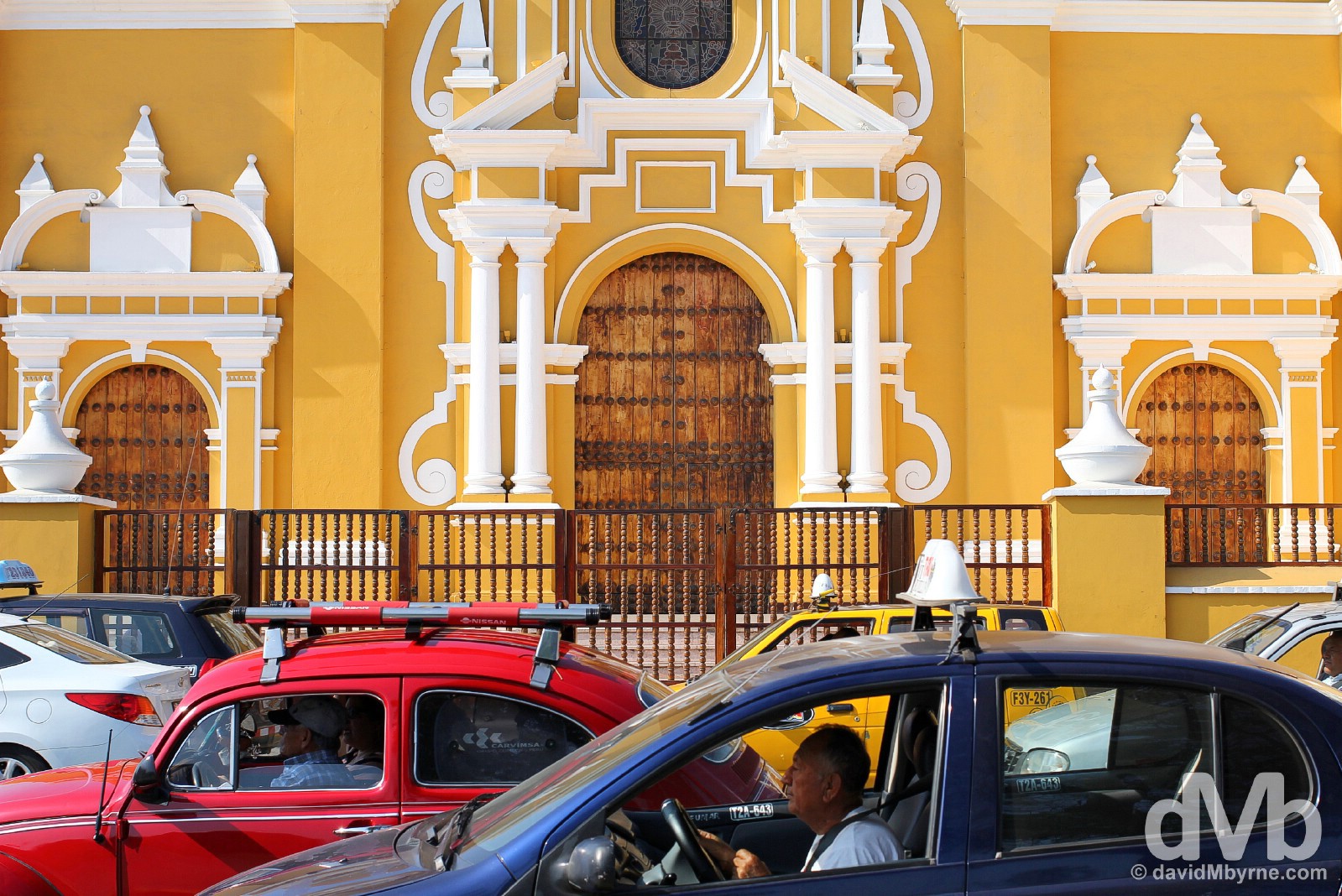
19 – Traffic outside La Catedral on Plaza Mayor, Trujillo, northern Peru. July 31 || The last few days of July were spent in dusty northwestern Peru, quite the contrast to the Ecuadorian Andes further north whence I came. Again Peru was to prove oh-so photogenic and it all started with the three charming colonial desert towns of Piura, Chiclayo & Trujillo, all separated in a north-south line by a distance of some 420 kilometres of the Pan-American highway through the barren Sechura Desert. Chiclayo & Trujillo both offer access to amazing, adobe brick-heavy ancient archaeological desert sites – I toured the largest complex of monumental adobe structures in the New World at Tucume outside Chiclayo & was awed by the Huaca del Sol (Temple of the Sun), the largest mud-brick pyramid in the Americas, outside Trujillo – but it was the gorgeous central plazas of all three cities that got my camera excited the most, with the central Plaza Mayor in Trujillo the most photogenic of the lot. Trujillo, Peru’s northern capital & the country’s third city after Lima & Cusco, was founded as a Spanish settlement in 1534. It boasts over 20 blocks of lavish colonial architecture, the centre of which is Plaza Mayor, the city’s central plaza, a common characteristic of former Spanish colonial settlements. An unexpected highlight of the city – I visited Trujillo solely to access the desert sites surrounding it – Plaza Mayor was to prove one of the nicest central plazas I was to visit in the whole of South America, with just the right amount of foliage and surrounded as it is with colourful mansions & civic buildings and overlooked by the city’s mid-eighteenth century mustard-coloured cathedral, La Catedral, a section of the façade of which is seen here. || See more from Turjillo as posted from the road in the entry Peru ||
August
Countries/Territories Travelled || Peru & Bolivia
Panpipes, or more the sound they make. That’s my abiding memory of August. I spent the majority of the month in the Andean heartlands of Peru & Bolivia where you’re never too far from the soothing sound of the primitive wind instrument synonymous with the region. My other abiding memory of the region was its vibrant colour. There’s colour everywhere.
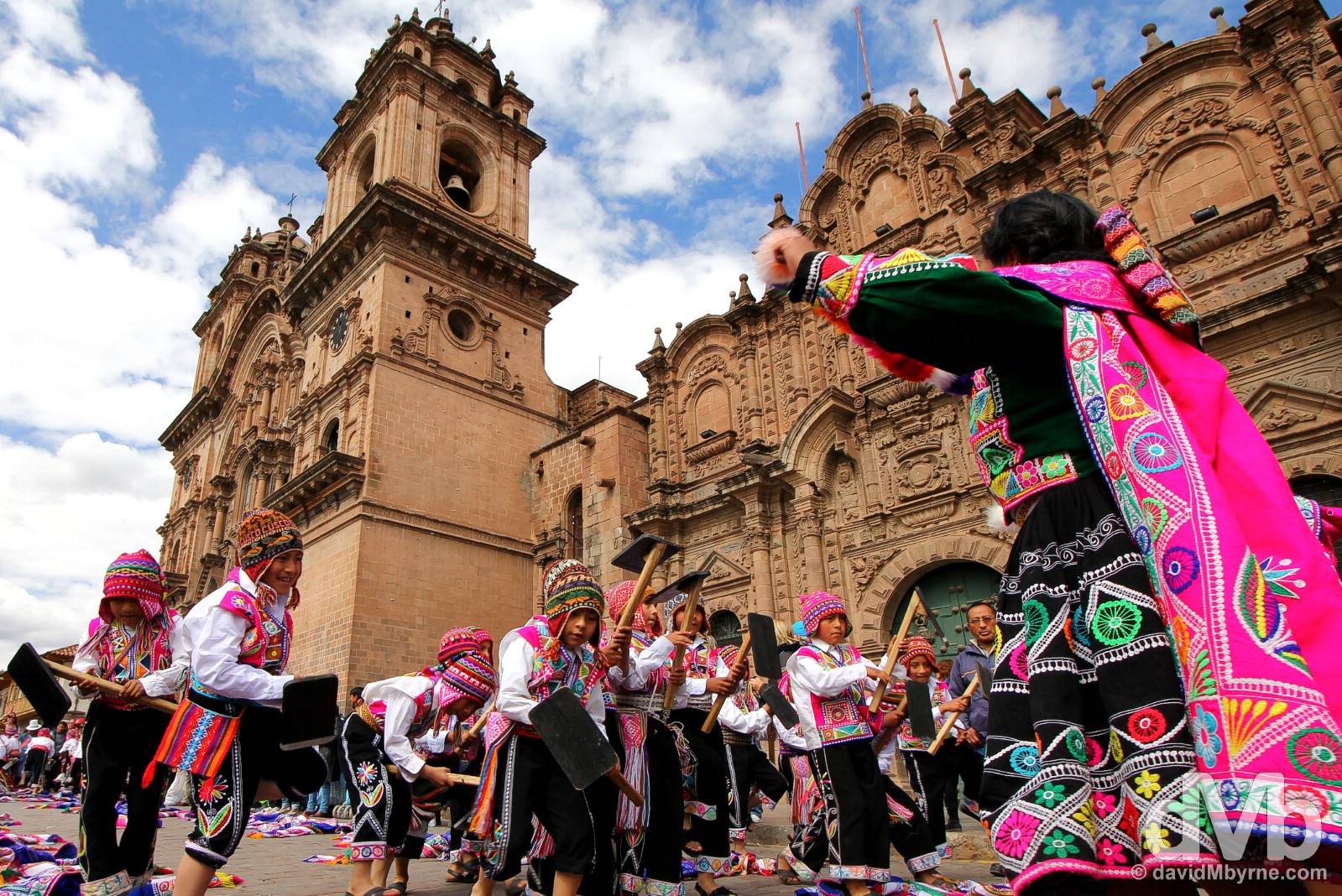
20 – Festival activity outside the twin-towered La Compania de Jesus on Plaza de Armas, Cusco, Peru. August 16
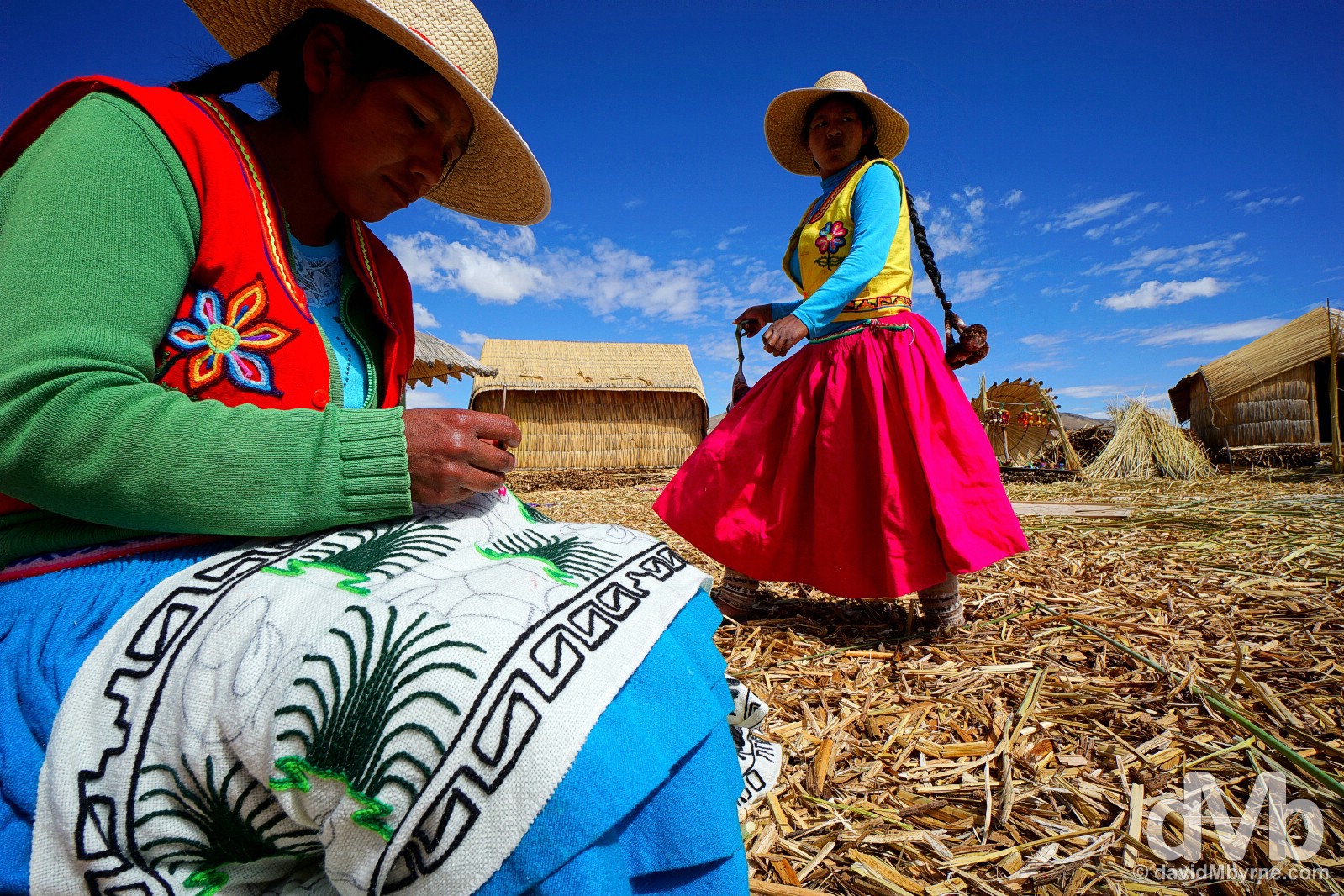
21 – Locals on the floating Uros Islands, Lake Titicaca, Peru. August 19 || First posted from the road in the entry Peru ||
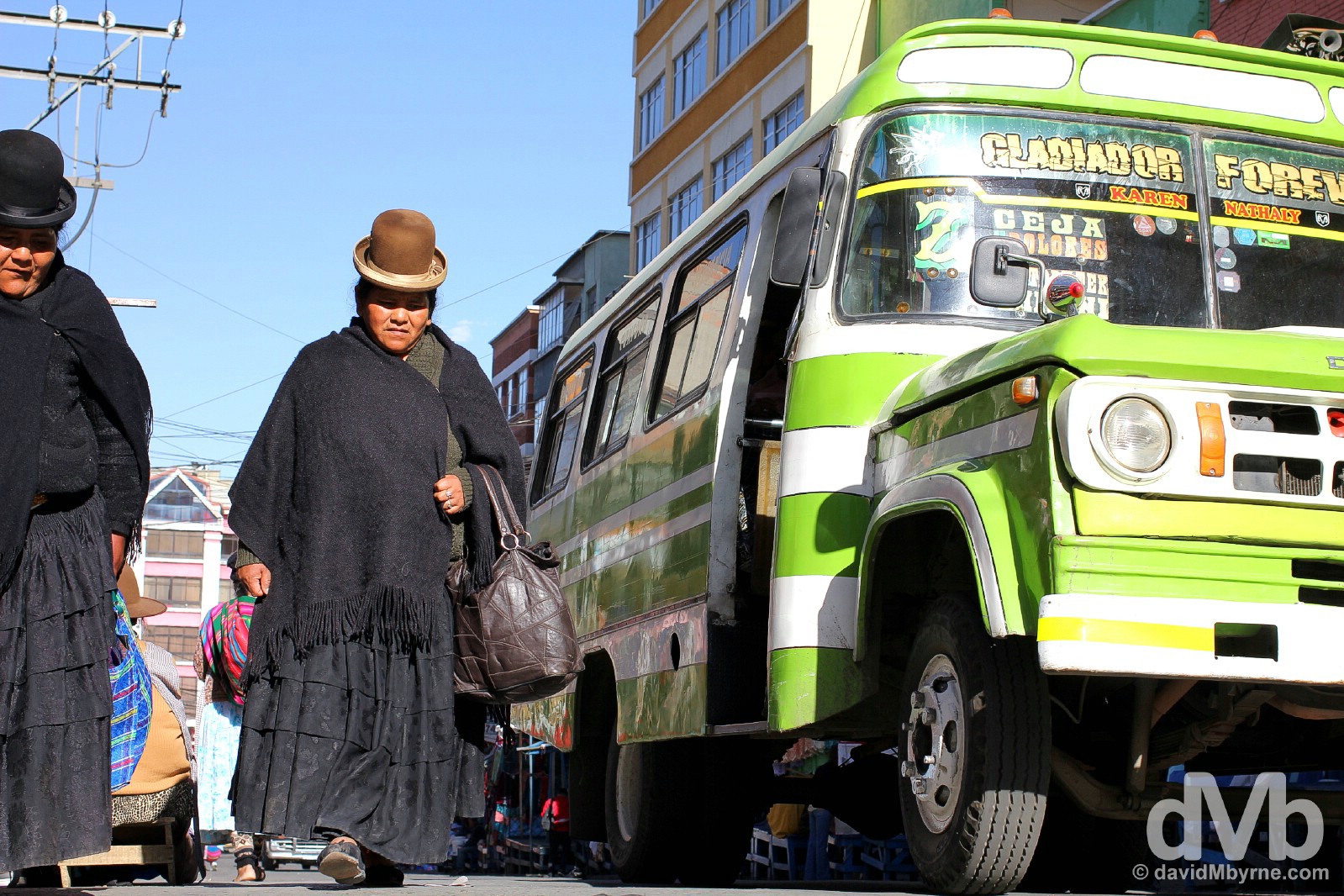
22 – Chola, traditional voluminous skirt & bowler hat-wearing Aymara women, on the streets surrounding Marcado Buenos Aires in La Paz, Bolivia. August 26
September
Countries/Territories Travelled || Bolivia, Argentina, Paraguay, Brazil, Uruguay & Chile
Crisscross. I covered a lot of South American ground in September. I first travelled west to east, coming down out of the Andean hills of Bolivia & right to the Atlantic coast of Brazil, before crossing the whole continent to arrive back at its Pacific Ocean side in Chile. And once I got there I kept going all the way out into the middle of the vast Pacific Ocean – I ended the month on Easter Island, a highlight of the year and one of the most awe-inspiring amazing places I’ve ever had the privilege of visiting.
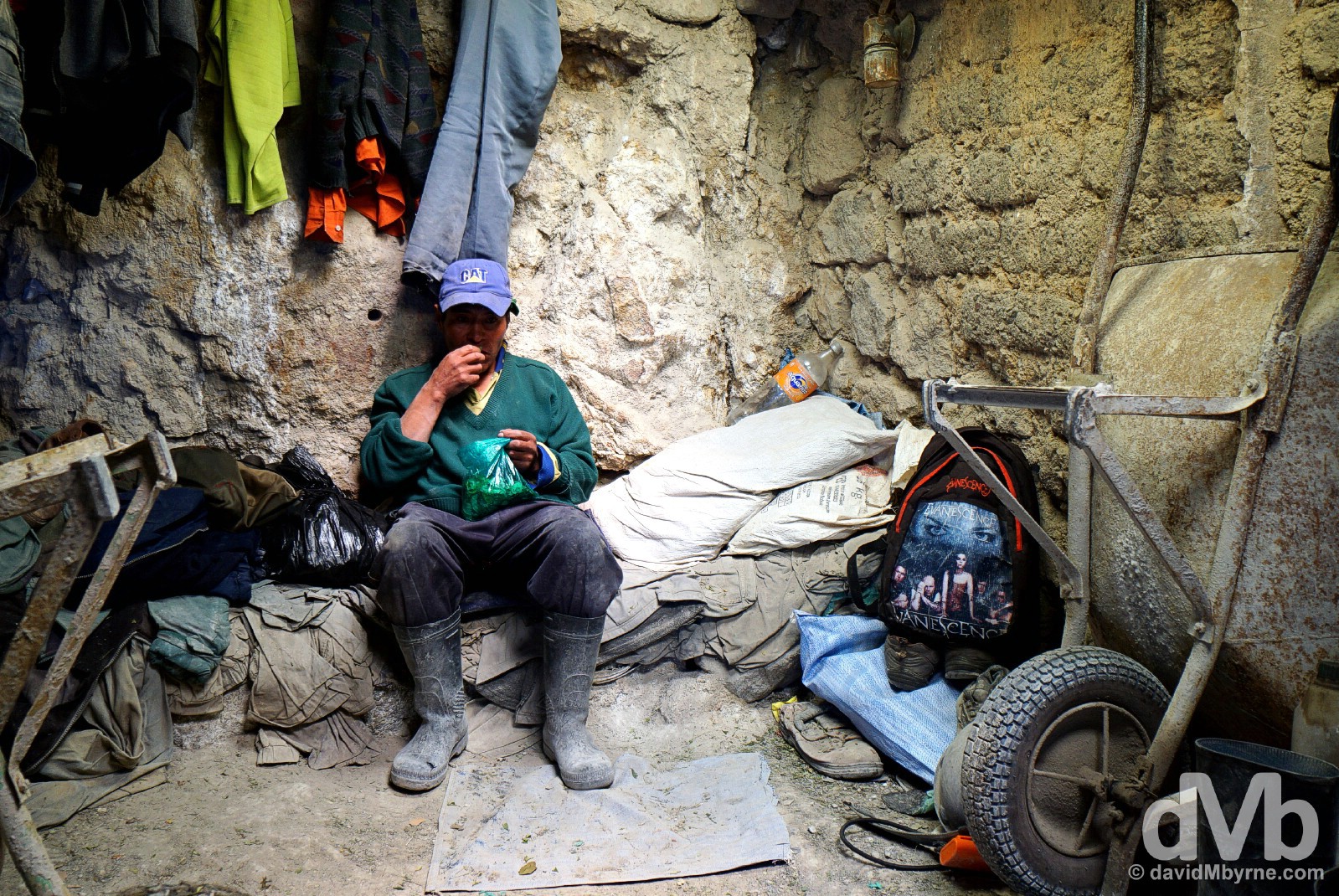
23 – A miner chewing coca leaves during a break from work in the Cerro Rico Mines, Potosi, Bolivia. September 1 || I spent the first day of September, my birthday, in Potosi, Bolivia. Sitting at 4060 metres on a desolate windswept Bolivian plain, it is one of the highest cities in the world. The town is overlooked by the perfectly conical peak of Cerro Rico (Rich Hill), a hill that just happens to be the richest source of silver the world has ever seen, one the Spanish milked for all its worth – millions worked & died in deplorable conditions over three centuries of mining from the mid-16th century onward to extract wealth that the Spanish shipped back to Europe. Today the Cerro Rico mines are still operational – although these days they mostly produce tin – and embarking on a tour of the mines is the Potosi must-do. Exploring the dark, dusty, claustrophobic mine shafts on this day gave me a fascinating firsthand look at the hard life that is mineral mining in this part of the world. I always feel privileged to live the life I do but seeing miners toiling for 10 hours of hard labour a day for a monthly salary of some €250, above average for Bolivia, I was reminded just how privileged I really am. Needless to say photography was a challenge in the dark mine shafts. There was a little more light to play with in the hut at the entrance to one of the shafts where I captured this picture of a miner working through his bag of coca leaves – a mild source of cocaine, the stimulating effect of chewing the leaves helps the miners through their tough shifts – during a taking a well-earned break. Unanimated the whole time I shared the tight confines of the hut with him, I don’t think he quite liked me taking pictures but I quite liked the results.
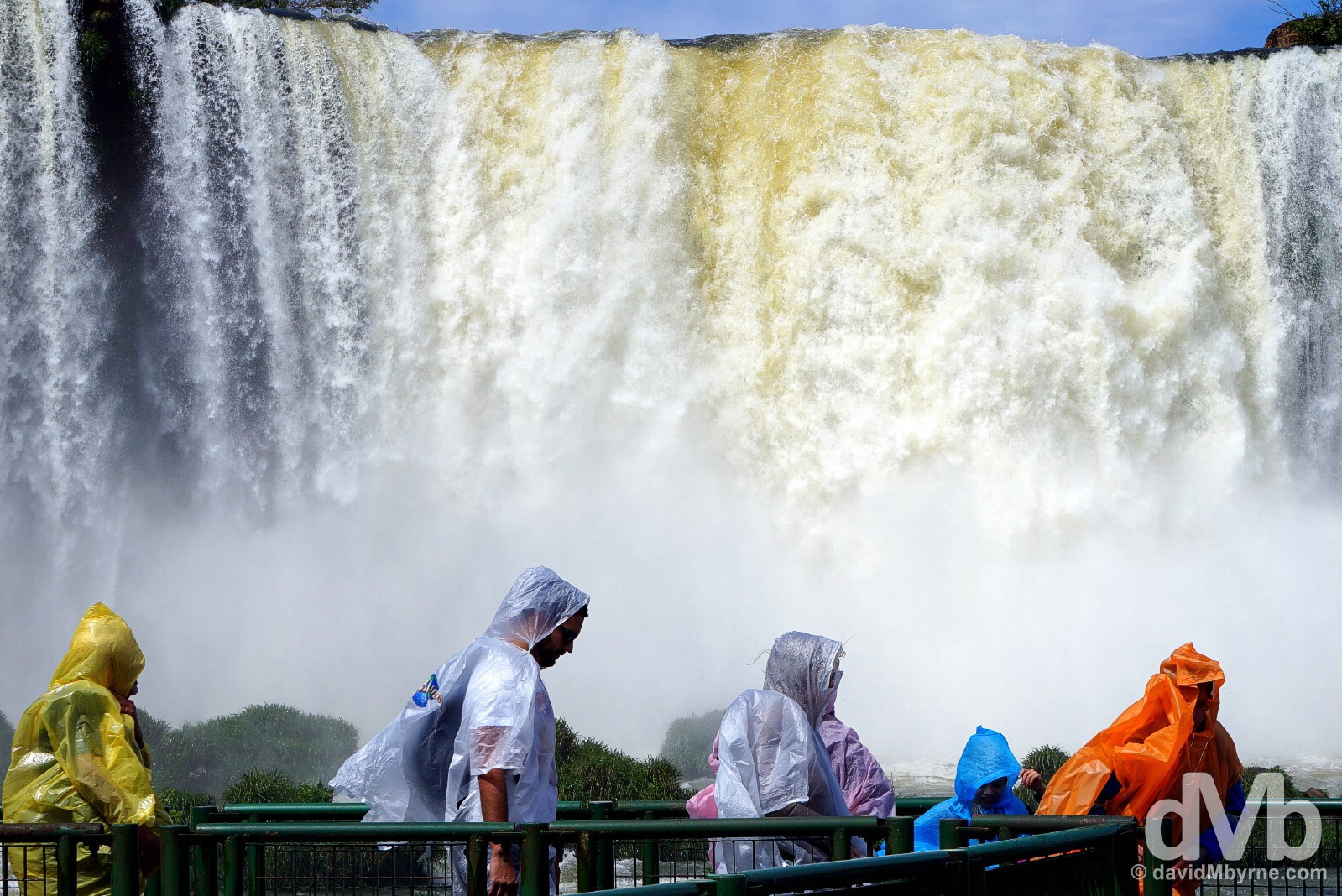
24 – Iguazu Falls in Parque Nacional Do Iguacu, Brazil. September 12 || Iguazu Falls, situated on the border of Brazil & Argentina & surrounded by lush tropical forest, are easily one of the world’s greatest natural wonders. The first attraction I visited in Brazil, it was also, thanks to its 275 individual thunderous walls of water, bound to provide me with one of my favourite images from the year. This is it. || First posted from the road in the entry Brazil ||
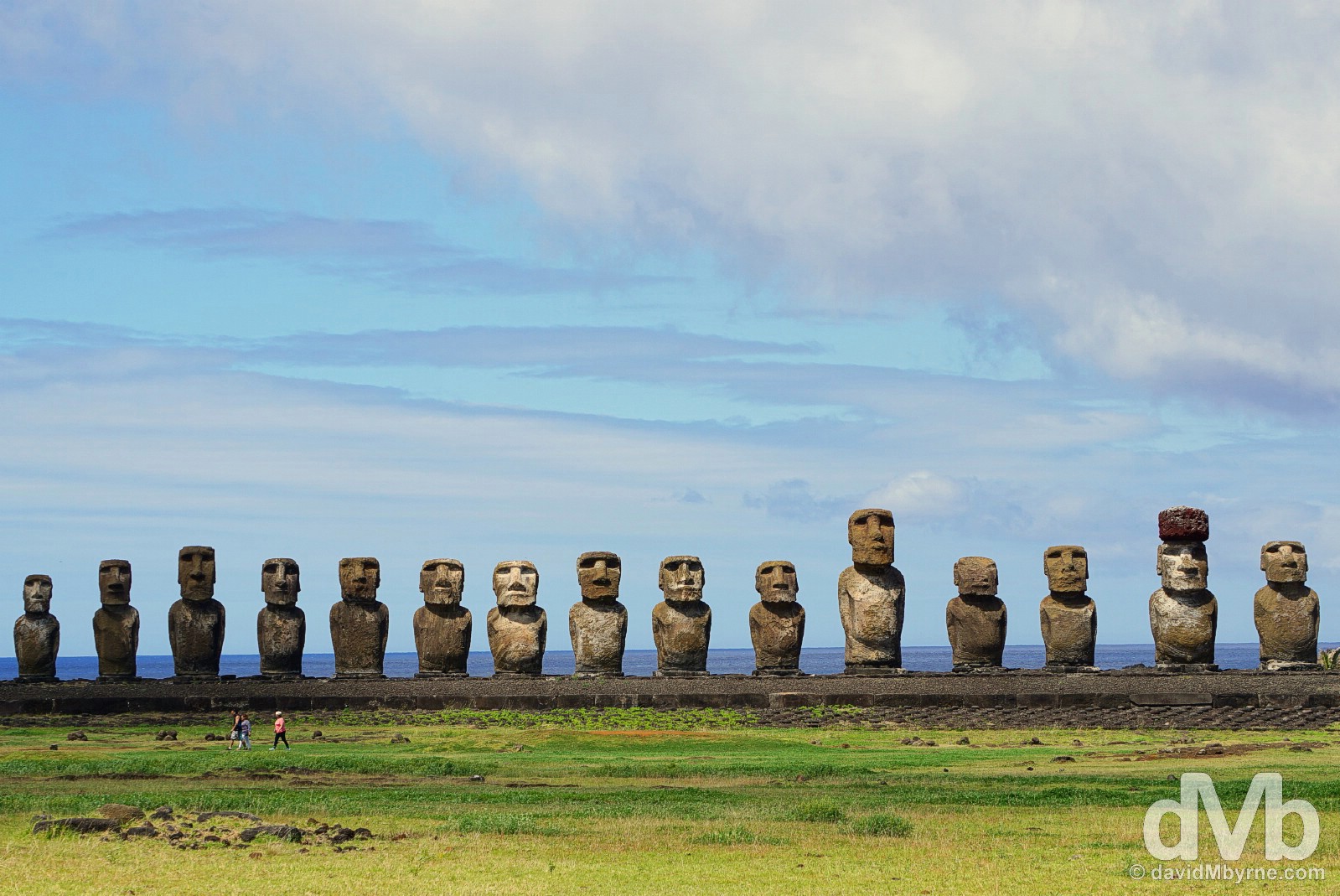
25 – At the 15 moai of Ahu Tongariki, Easter Island, Chile. September 29 || I was sad leaving Easter Island at the end of the 6 nights I spent there. The small & remote Pacific Island, some 3,000 kilometres off the South American mainland & some 2,300 kilometres from the next inhabited island, is home to the moai statues, the iconic symbol of the island. Erected as a form of ancestor worship & to offer protection to the ancestral lands they faced, almost all of the 400 or so moai that dot the coastline of the island were toppled it is believed because of tribal warfare resulting from the collapse of the societal system that that once prospered and which initially produced and erected the statues. Some of the moai have been restored to their perch, their Ahu, with the 15 moai of 200 metre-long Ahu Tongariki the most famous example. The largest ahu to be found on Easter Island, it was completely destroyed by a tsunami in 1960, one so powerful it carried some of the 30-tonne moai upwards of 90 metres inland. Restored to its former glory in 1995 by a joint Japanese-Chilean team, today Ahu Tongariki is once again one of the world’s most sensational sights, one I spent a lot of time admiring & photographing towards the end of the month. || See more from my time on Easter Island as posted in the entry Easter Island ||
October
Countries/Territories Travelled || Chile & Argentina
The majority of not only October but also November was spent splitting time in both Chile & Argentina. I crisscrossed the border between the two countries over half a dozen times as I slowly made my way south, destination the very end of the continent. Andean splendour & the remoteness and ramshackle wooden architecture of Chile were to be my abiding memories of the month of October.
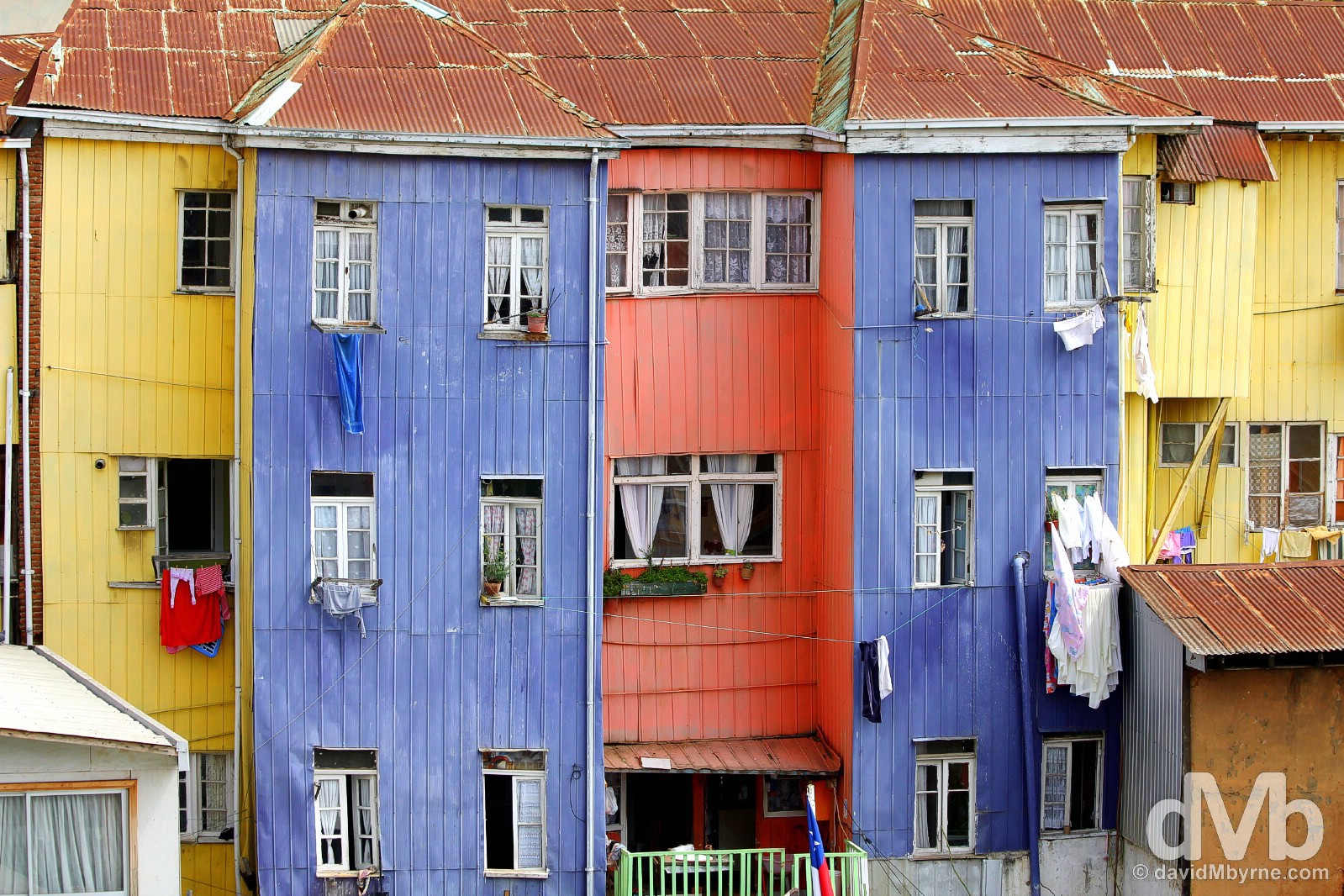
26 – A row of corrugated iron buildings in the Bellavista district of Valparaiso, Chile. October 8 || I loved the colourful, corrugated iron buildings that, and as I was to discover over the following weeks & months, are a characteristic of low-rise Chile. Nowhere in the country is this better typified than Valparasio, Chile’s only major seaport, an historic & ramshackle kind of place strewn over vast hills surrounding a major bay – once prosperous as a trade hub, during its golden era Valparaiso was known as “Little San Francisco” and “The Jewel of the Pacific”. These days astonishing graffiti covers everything from walls to lampposts to footpaths to steps making Valparaiso a city-sized outdoor art gallery. That in & of itself is impressive but there’s a particular charm to the city’s dilapidated corrugated hillside dwellings, structures that have been standing for decades but look like they might fall over at any minute, a real possibility given string of earthquakes that has blighted the city over its history. || First posted from the road in the entry Chile & Easter Island ||
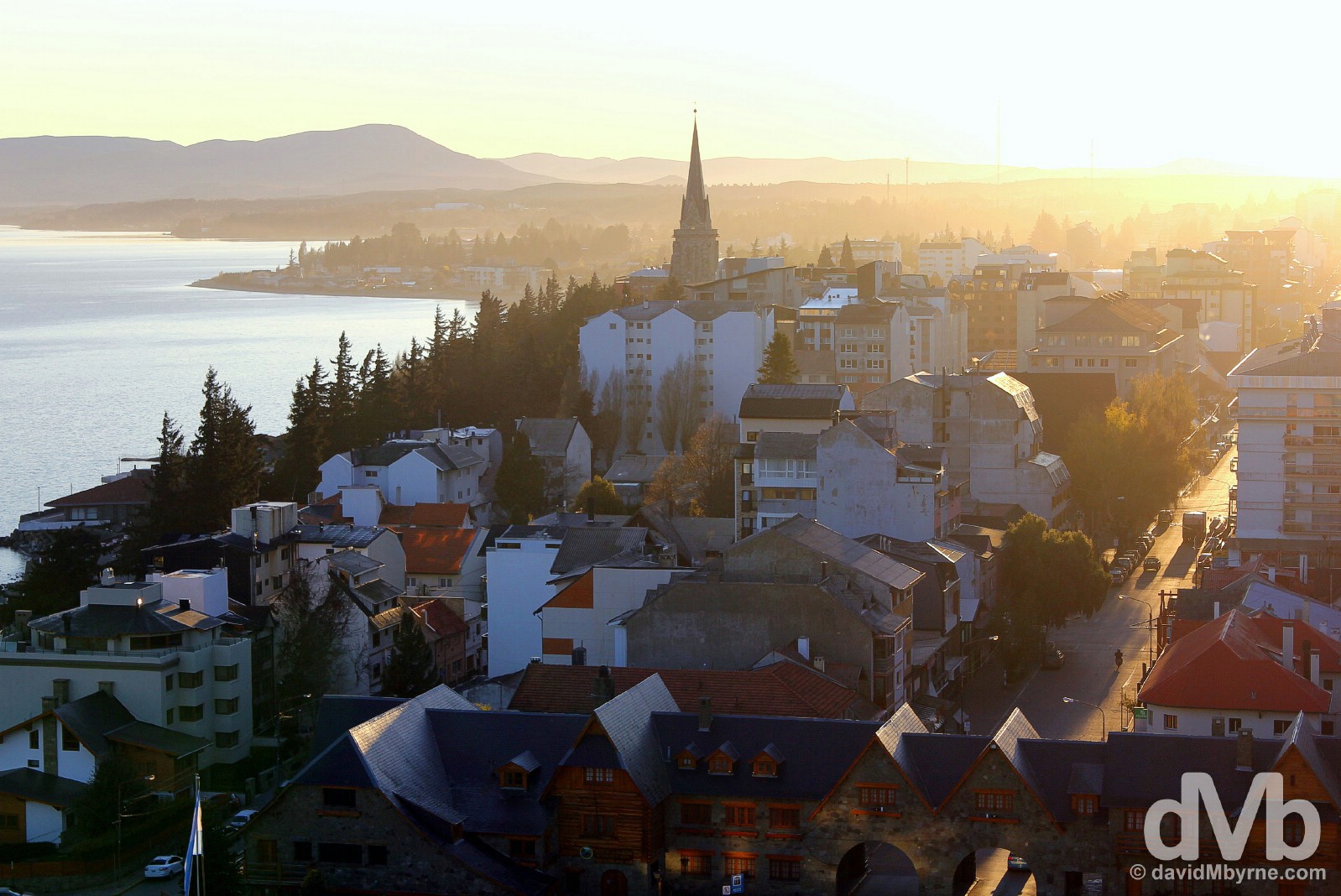
27 – Sunrise over Bariloche, Patagonia, Argentina. October 16|| Situated in the foothills of the Argentinian Andes & nestling on the southern shores of Lago Nahuel Huapi & on the edge of the trekking & skiing haven of Parque Nacional Nahuel Huapi, Bariloche was once an Andean backwater & the reserve of the indigenous locals. It wasn’t until the 30s & 40s that the transformation began to turn it into what it is today – a major tourism centre, one that is busy year-round but one that is particularly jam-packed with foreign & domestic holidaymakers during the southern hemisphere’s December to January high summer. Heavy on alpine-styled architecture and traveller comforts & conveniences, it’s the sort of place you’ll plan on spending a few days but could easily while away a few weeks. And if, as I did, you do end up spending more time here than planed then it’s highly likely the result of the jaw-dropping scenery & the general all-encompassing Andean splendour you’re thrust into simply by being here; it’s a tough environment to voluntarily remove yourself from. I photographed that aforementioned Andean splendour over many days spent in Bariloche but it was a simple picture of a sunrise over the lakeside town that was to prove my favourite capture of many from what was probably my favourite location that I visited in Argentina. || First posted from the road in the entry Argentina ||
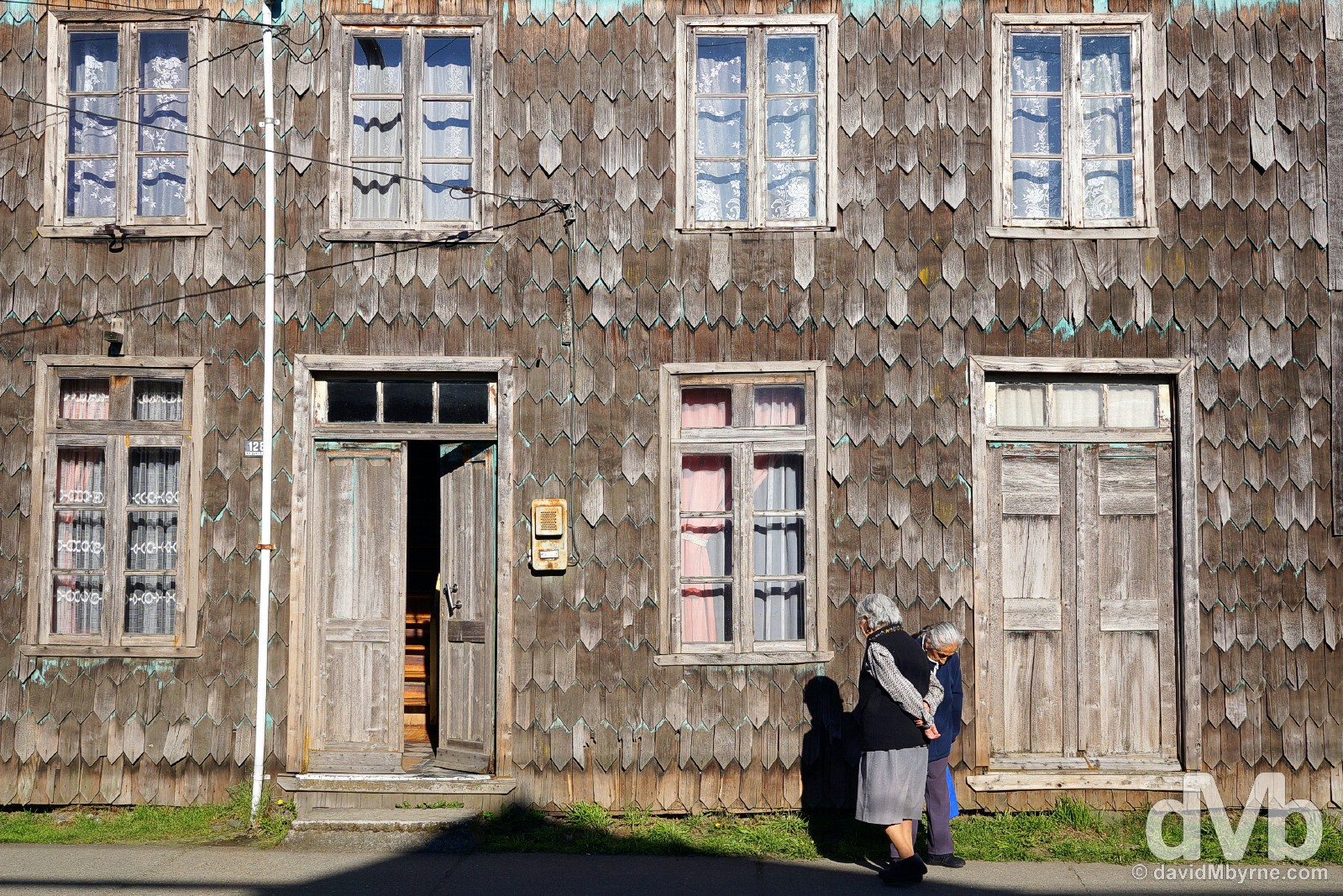
28 – Shingles & shadows. Conchi, Chiloe, Chile. October 22 || Back in Chile and away from the Andean hills, I spent three days on Chiloé, an archipelago of islands (barely) off the Chilean mainland. This remote region of rural tranquility is a haven of rolling farmland, forests, & traditional fishing villages. Relaxing it is but the island’s main draw is the array of shingled wooden architecture it has on display, especially the island’s astonishing collection of 18th & 19th century wooden churches, some UNESCO World Heritage listed, & its palafitos, waterside timber houses precariously propped up on stilts. Again I found it all very photogenic with this picture of a typically eye-catching shingled house in the quiet village of Conchi my pick of many Chiloé captures. || First posted from the road in the entry Chile & Easter Island ||
November
Countries/Territories Travelled || Argentina, Chile & Antarctica
November started out well & kept getting better. It was to be a very special month in a very special year. Gravity kept dragging me south and I eventually made it, made it all the way to the so-called end of the world, Ushuaia in Argentinian Tierra del Fuego. Getting there, through the remoteness and jaw-dropping beauty of Chilean Patagonia, was memorable but nothing compared to the 10-day trip to Antarctica, my 7th and final continent, that I eventually embarked upon from Ushuaia. Yes I had to wait around a bit for that, which ate into my December plans for warmer climes further north, but if I had to relive it all again I wouldn’t change a thing. Not a single thing.
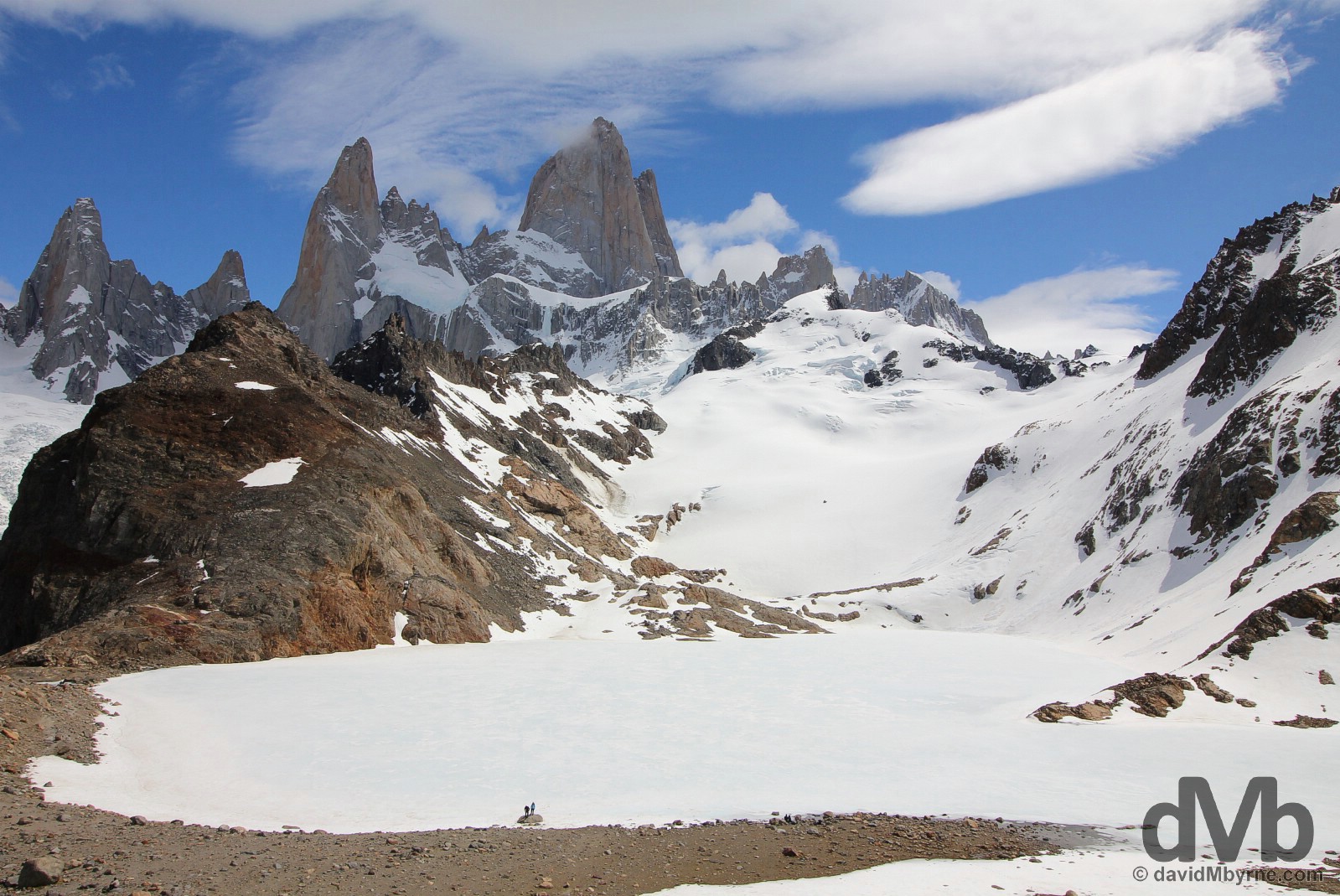
29 – A frozen Laguna de los Tres fronting Monte Fitz Roy in Parque Nacional Los Glaciares, southern Patagonia, Argentina. November 4 || Both are popular but as a hiking destination, the Fitz Roy region of Parque Nacional Los Glaciares in Argentinian Patagonia plays a distant second fiddle to Chile’s Torres del Paine a little further south. I hiked both locations. Torres offers more extensive hiking but the scenery, & assuming the weather plays ball, is, in my opinion, unrivalled at Fitz Roy’s Laguna de los Tres where I took this picture. It is easily one of my favourite images of the year mainly because, I’m suspecting, it was captured in one of the most jaw-dropping natural settings I’ve ever visited anywhere in the world. || First posted from the road in the entry Argentina ||
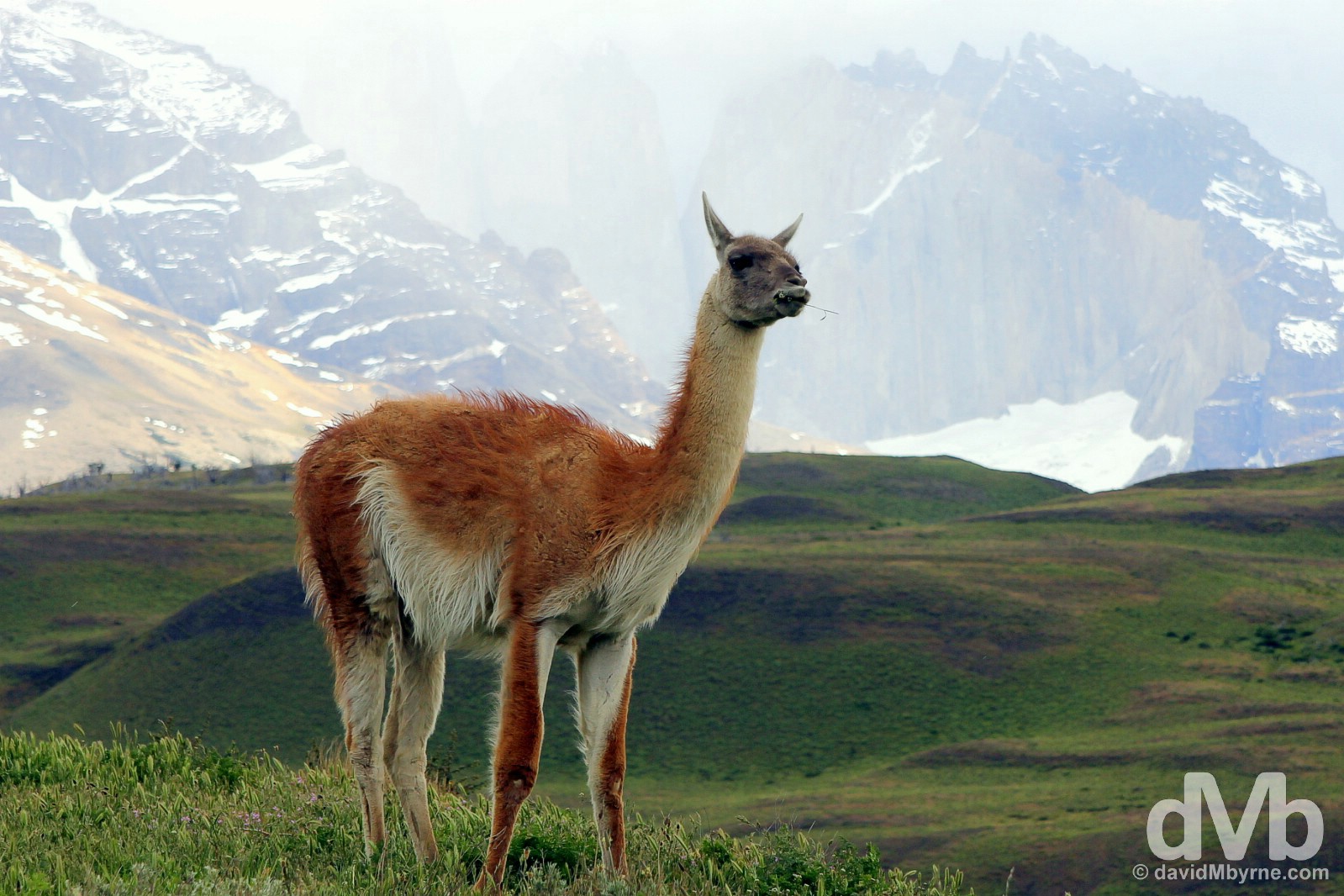
30 – A guanaco in Torres del Paine National Park, Patagonia, southern Chile. November 24 || I got two bites at the Torres del Pine cherry, visiting a second time while killing time waiting to embark on a trip to Antarctica. On my first visit I spent only a day in the park, South America’s most popular hiking destination deep in Chilean Patagonia and a magnet for the outdoorsy type. The weather didn’t cooperate on that initial visit and I left without laying eyes on the South American icon I came to see, the three, 2,500 metre-high sheer granite towers that give the park its name, the 12 million-year-old Torres del Paine, Spanish for ‘Towers of Paine’. One my second visit, some 2 weeks later, I did Torres properly, spending 3 nights walking its W circuit trek. This time the weather was great, the views unhindered (although the limbs sore) & I did get to see the elusive towers. I also saw a guanaco, a wild llama, grazing while waiting on this day for the bus out of the park at the end of the hike. Notoriously jolty & suspicious of humans, this guanaco was quite content to pose while I was photographing him, albeit from a distance. Hidden in the background are the aforementioned Torres del Paine, shrouded in mist just like they were on my first visit to the park. Visible for days up to this point, clouds finally enshrouded them as I was bidding the park adieu for the second and final time. One of my favourite pictures of the year as it is, it could have been so much better, postcard perfect, but for the spoilsport background clouds. || Originally posted in the entry Torres del Paine National Park ||
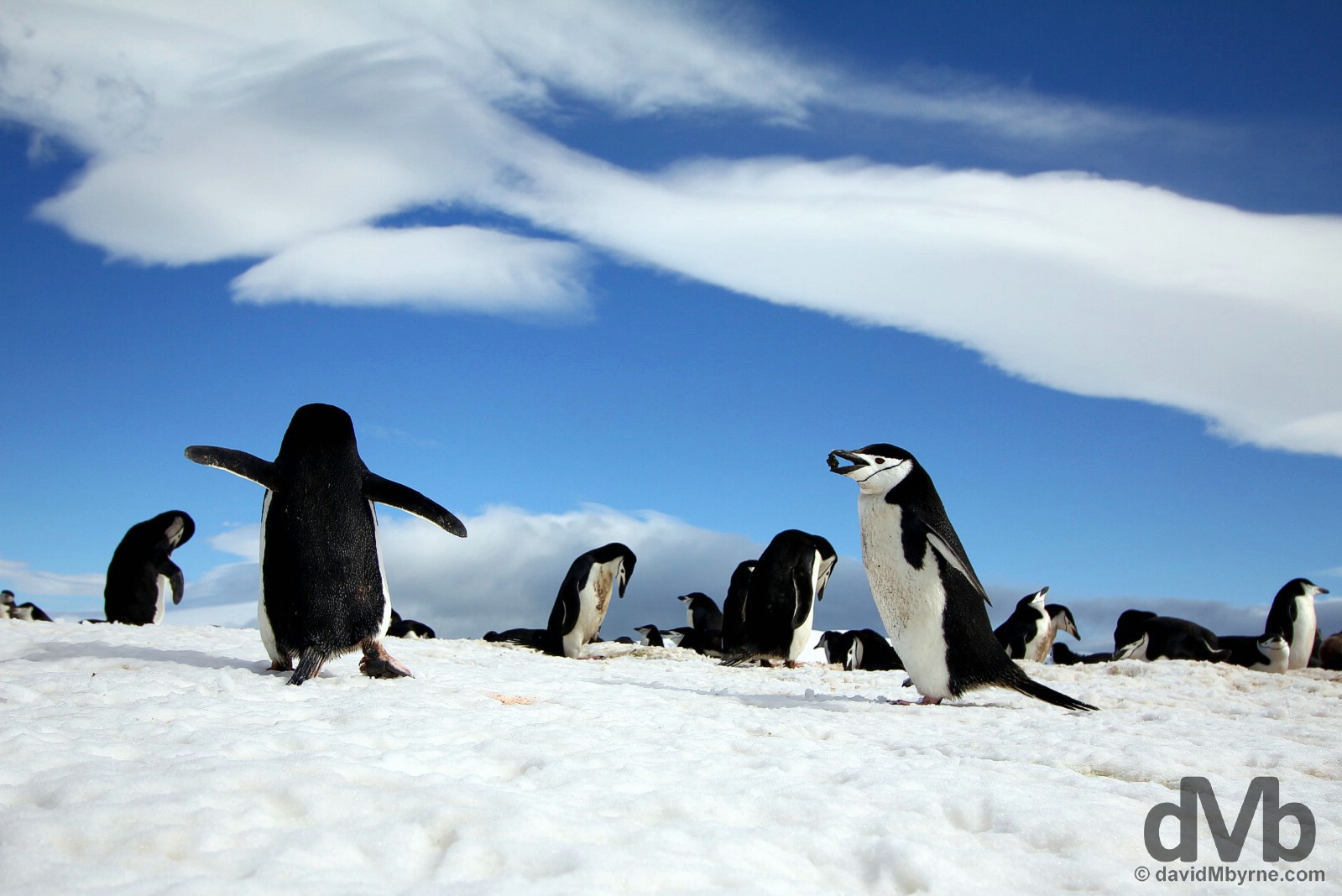
31 – Chinstrap penguins on Half Moon Island, South Shetland Islands, Antarctica. November 29 || It’s stating the oh-so obvious to claim that my late-November to early-December 10-day trip to Antarctica was a highlight of the year that was. It was a treat on many, many levels, not just photographically. This picture is probably, and if my life depended on picking just one picture, my favourite capture of the whole year. Captured on the morning of the 4th day of the trip, looking at this picture just makes me smile reminding me as it does of the comedic little penguins I grew to love; the stunning, unrivalled, & pristine Antarctica environment; and of a time when I thought, for 10 days straight, that life couldn’t get any better than this. || First posted from the road in the entry Antarctica ||
December
Countries/Territories Travelled || Antarctica, Argentina, Uruguay & Brazil
In December I left the remoteness & laid-back vibe of the very south of South America behind to spend 2 weeks in Argentinian, Uruguayan & Brazilian cities. And I did so rather abruptly – within 24 hours of arriving back in Ushuaia from Antarctica I was donning summer attire for the first time in months while warming up in Buenos Aires, the Argentine capital that I’d only passed through some months earlier en route from the South American Atlantic coast to its Pacific coast. And having visited countless South American cities over the previous 6 months, I think I might just have left the best of the lot – Rio de Janeiro – until last.
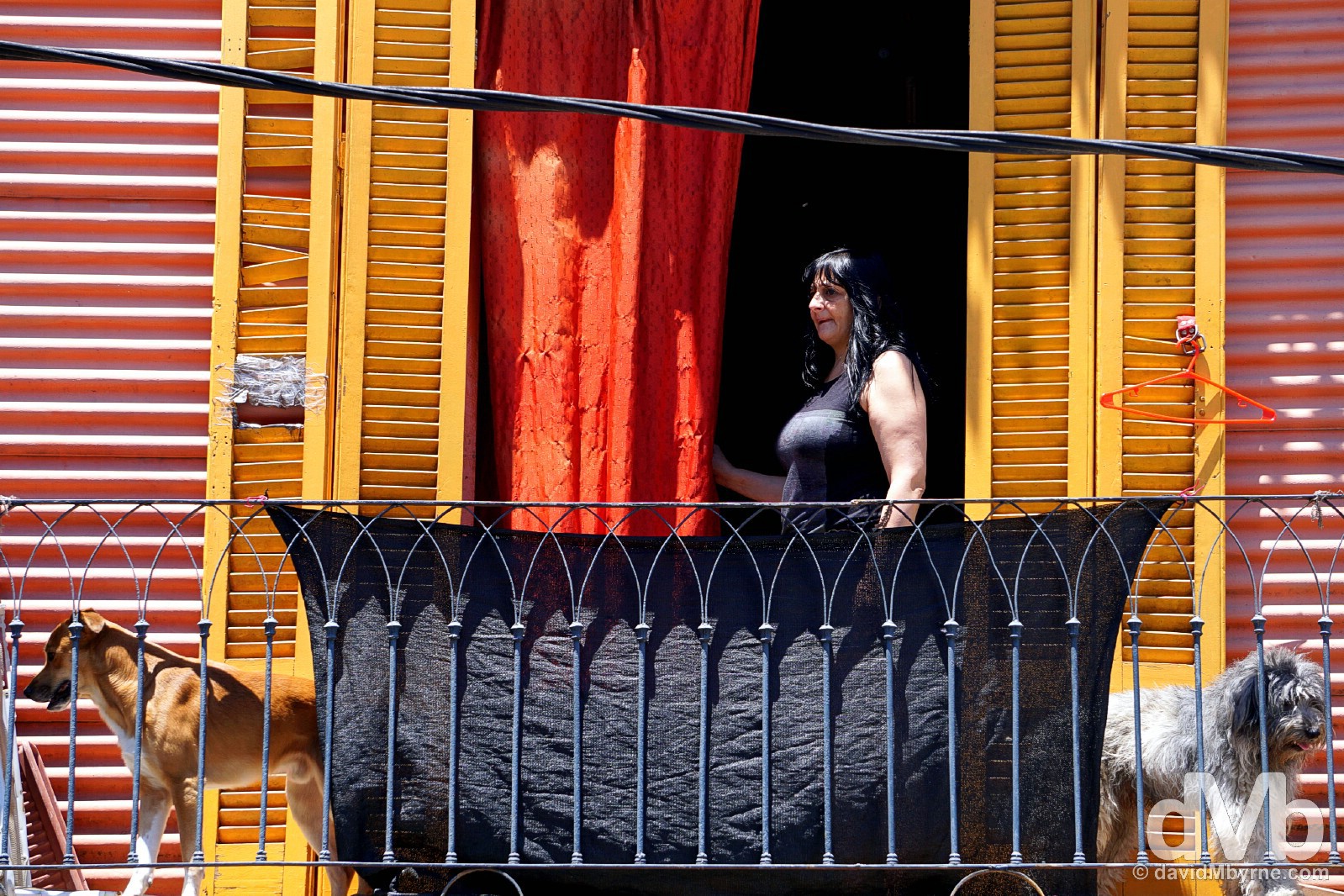
32 – A residential balcony in the colourful La Boca neighbourhood of Buenos Aires, Argentina. December 6 || I didn’t give myself much time in the Argentine capital but I still spent enough time there to capture some picture I liked, including this one in the La Boca neighbourhood of the city. ||
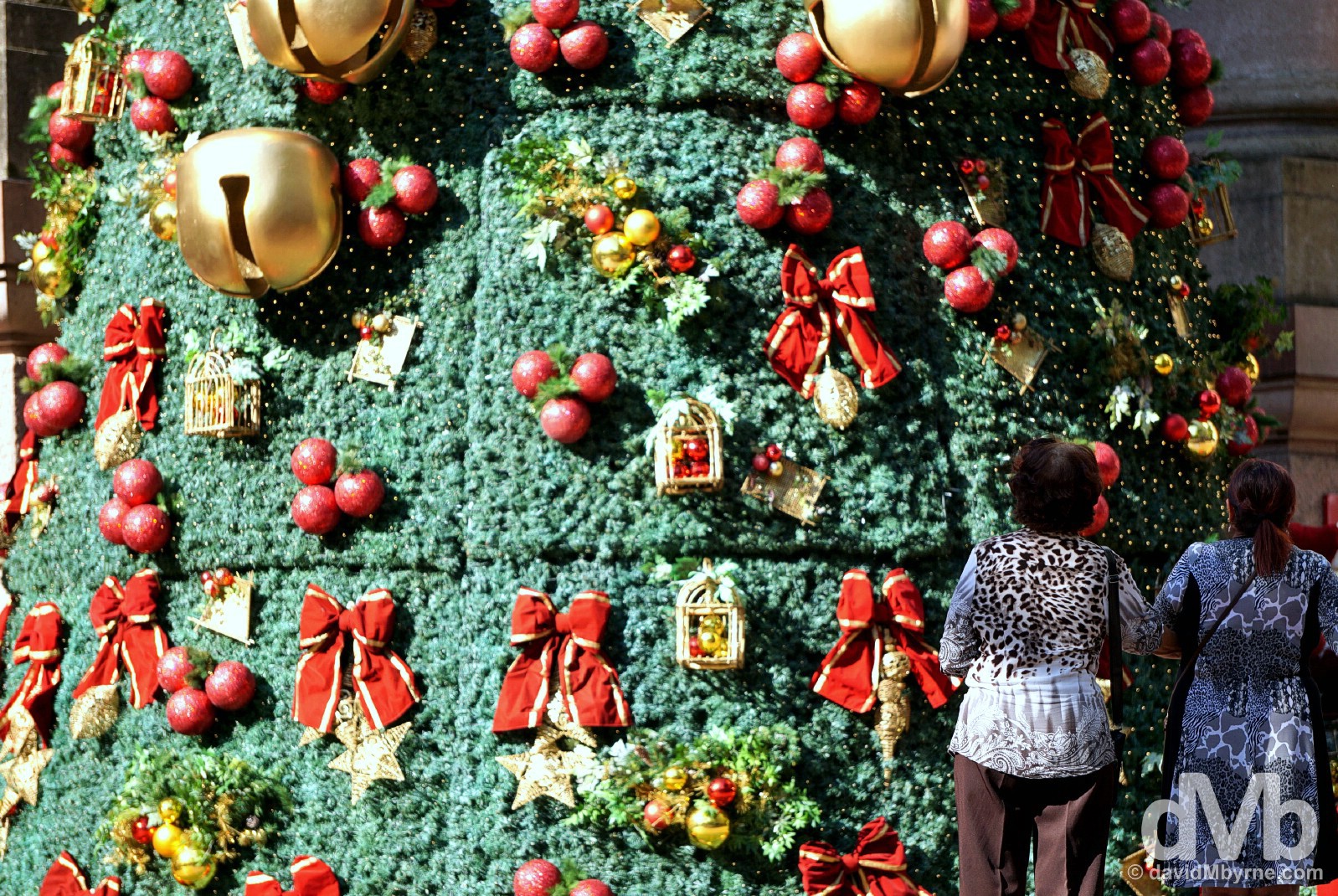
33 – Admiring the massive Christmas tree in Alfandega Square in central Porto Alegre, Brazil. December 8 || I first saw Christmas decorations in a Chilean supermarket back in early October. I then forgot about Christmas, that was until I arrived in Porto Alegre, Brazil, on the 8th day of December. My peregrine existence means I largely avoided the unnecessarily long build-up to a time of the year that, rampant over commercialism aside, I still love. I can never before recall sweating while photographing a Christmas tree but the perspiration was flowing when photographing this massive plastic tree, the temporary centrepiece in Porto Alegre’s Alfandega Square. It was also the first time this season that I heard a Christmas song, any Christmas song – Bing Crosby’s White Christmas was the culprit. It all combined to remind me that, and the 30+ degree Celsius temperatures aside, 1) Christmas was just around the corner & 2) I was almost home. || First posted from the road in the entry Brazil ||
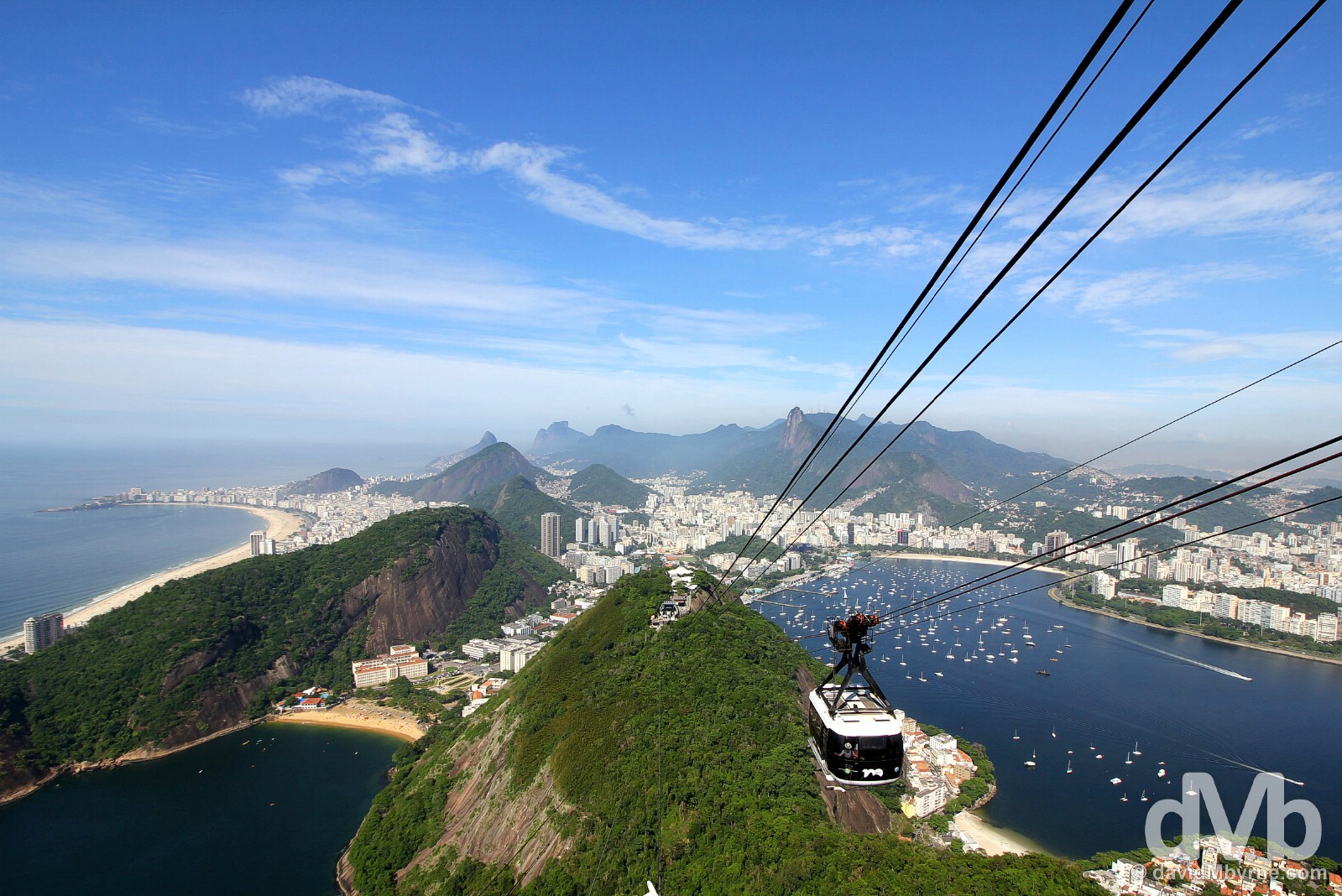
34 – Rio de Janeiro, Brazil, as seen from the city’s Sugarloaf Mountain. December 12 || There’s no doubt Rio de Janeiro is alluring, boasting as it does one of the most enviable natural settings of any world metropolis, easily its biggest draw. World-renowned place names like Copacabana and Ipanema & a few iconic landmarks, both natural (Sugarloaf Mountain) & man-made (Christ the Redeemer, the Maracana), add to the aura. Beautiful weather & an equally beautiful people with a lust & verve for life, one that reaches its zenith during Carnival, combine for quite the package. Yes Rio is cool, yes Rio is beautiful, especially when viewed early in the morning on a clear day from the aforementioned Sugarloaf Mountain. || First posted from the road in the entry Brazil ||
A few days after the above picture was taken, December 14, I flew home from Sao Paulo, Brazil, and in doing so I brought an end to what was easily my busiest year in travel & photography thus far.
















